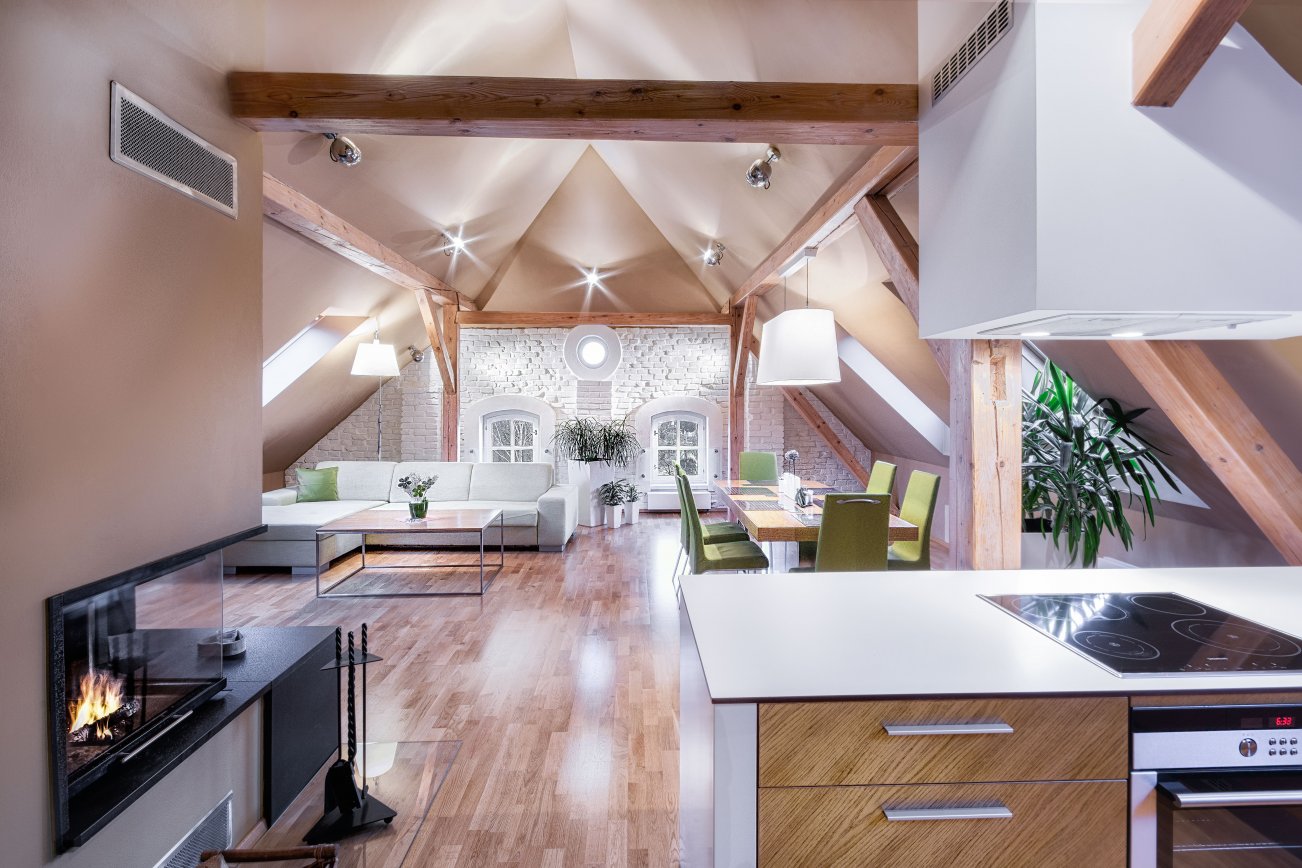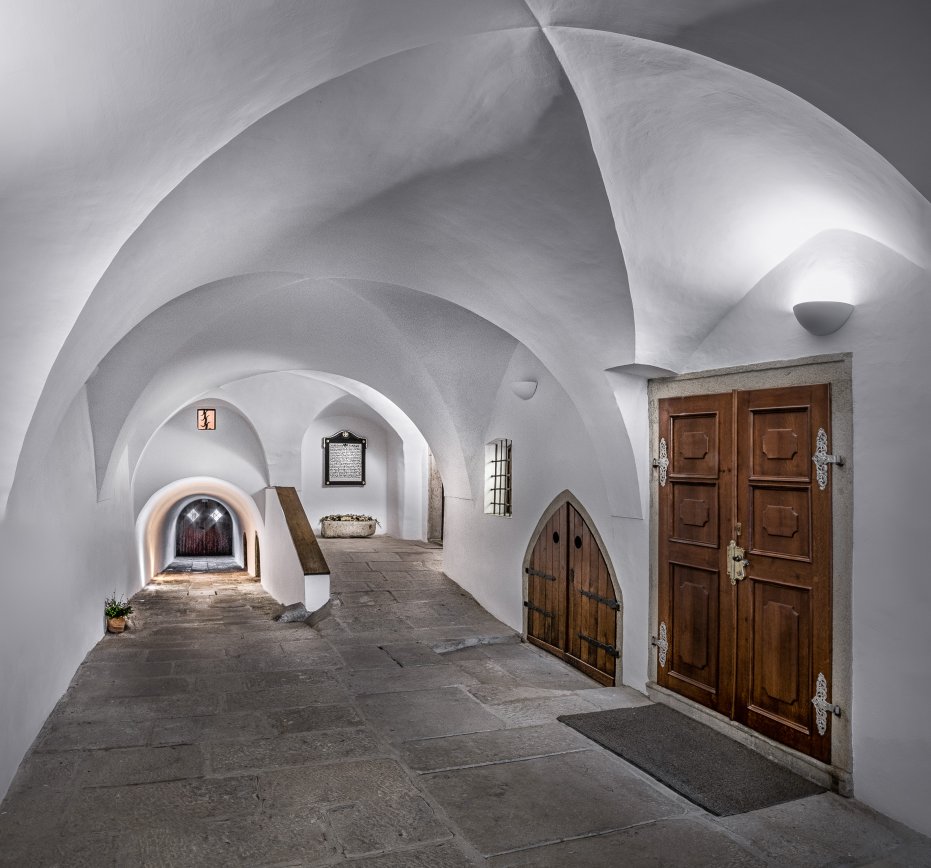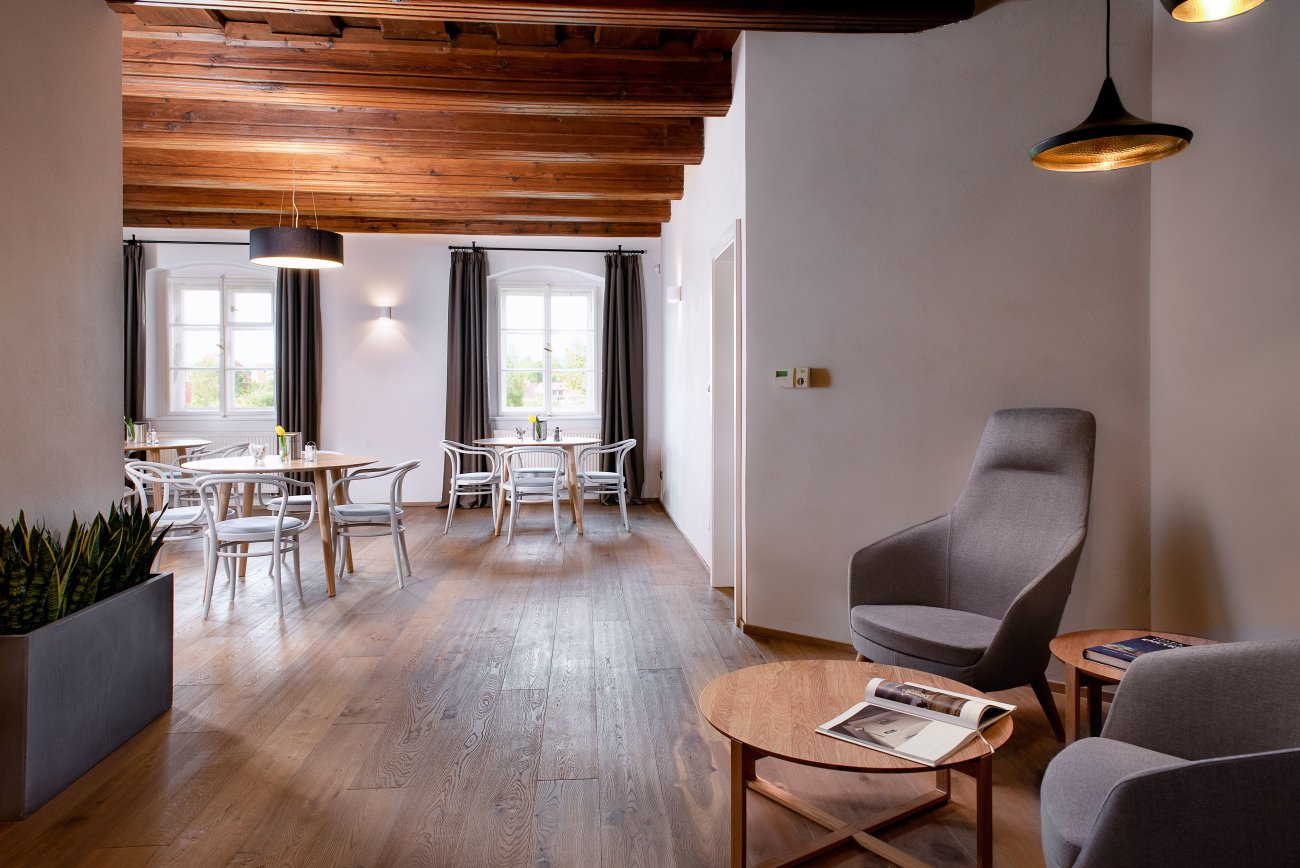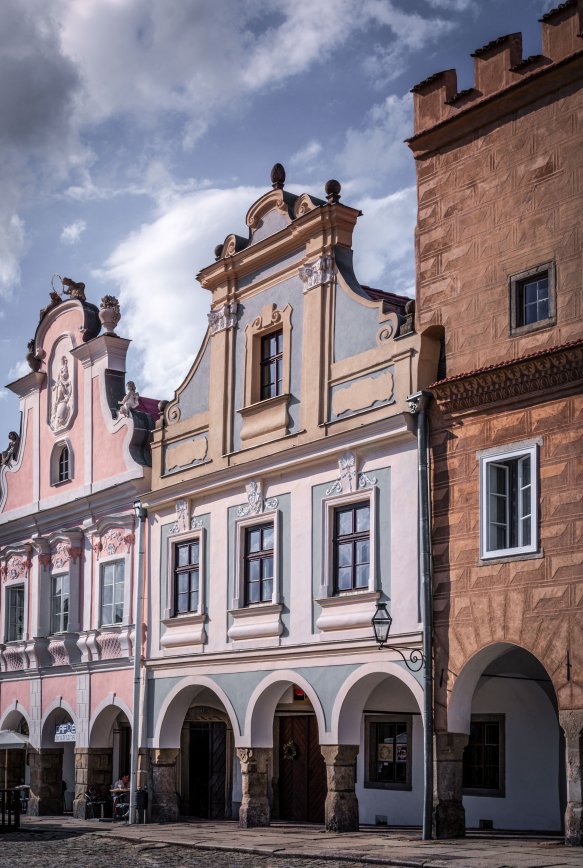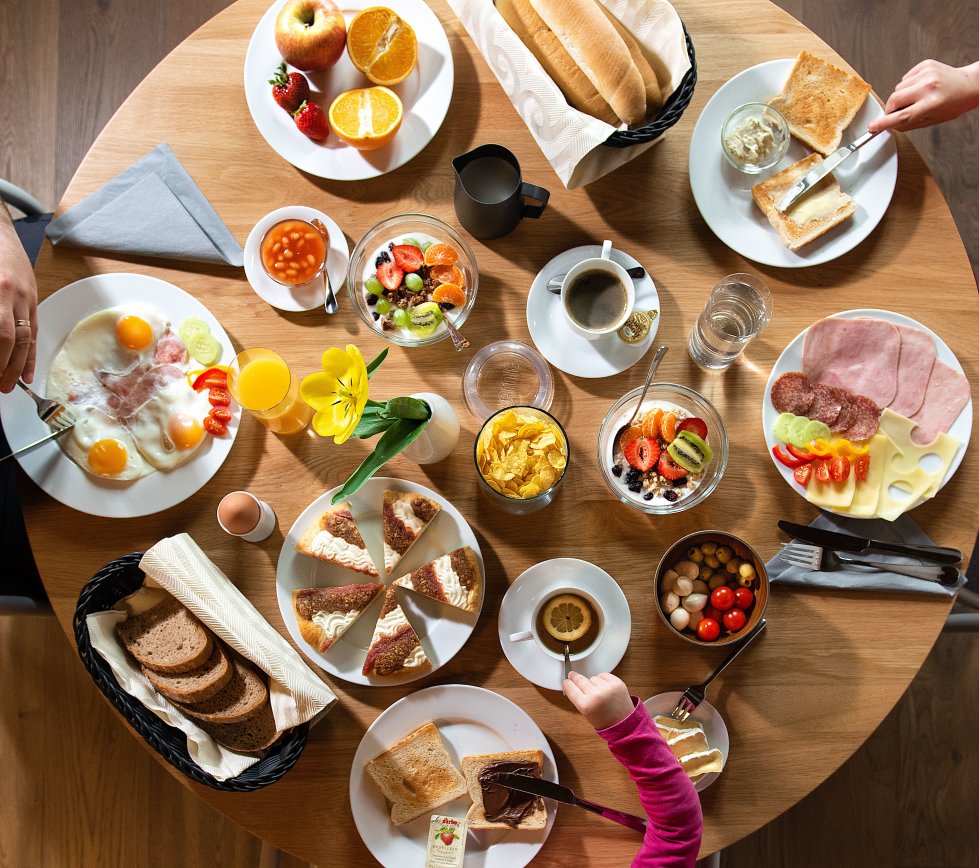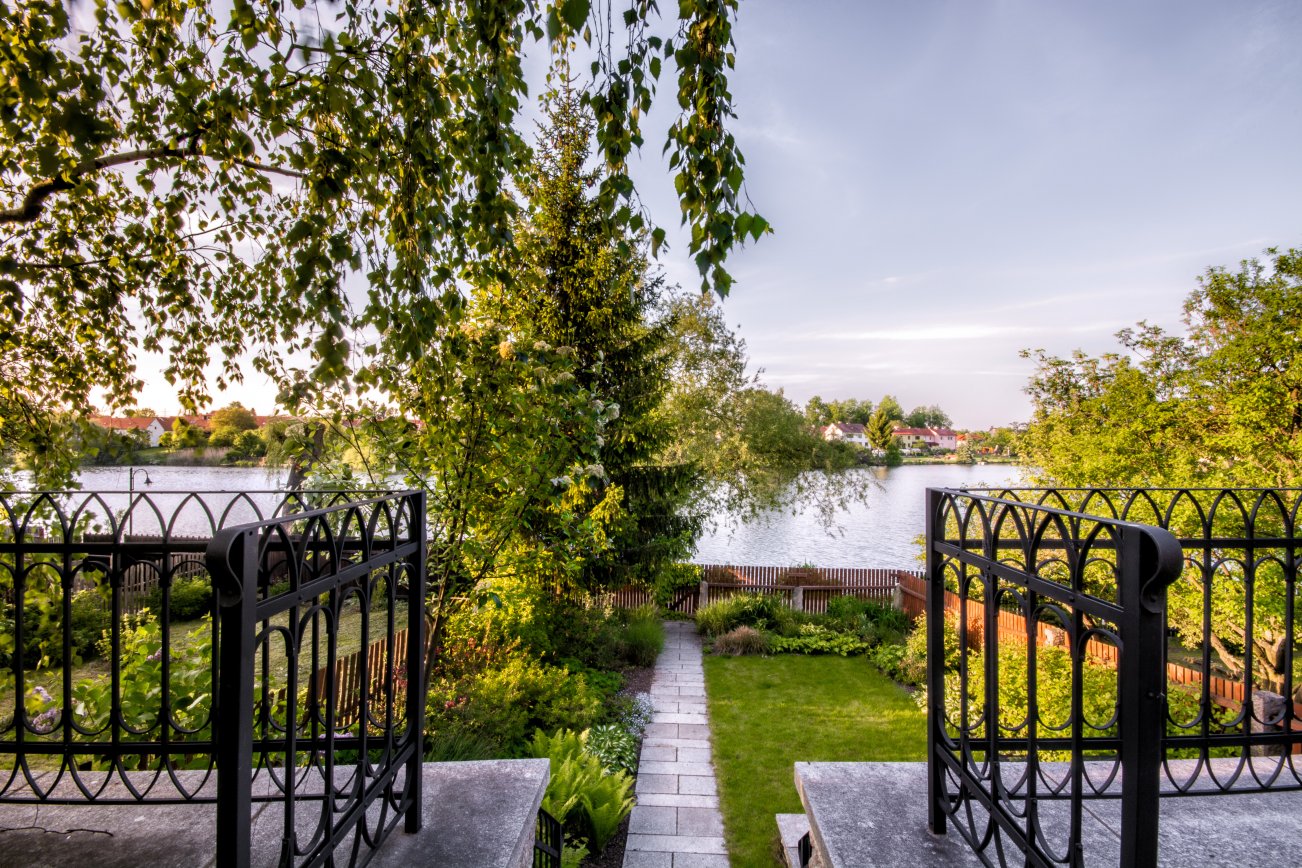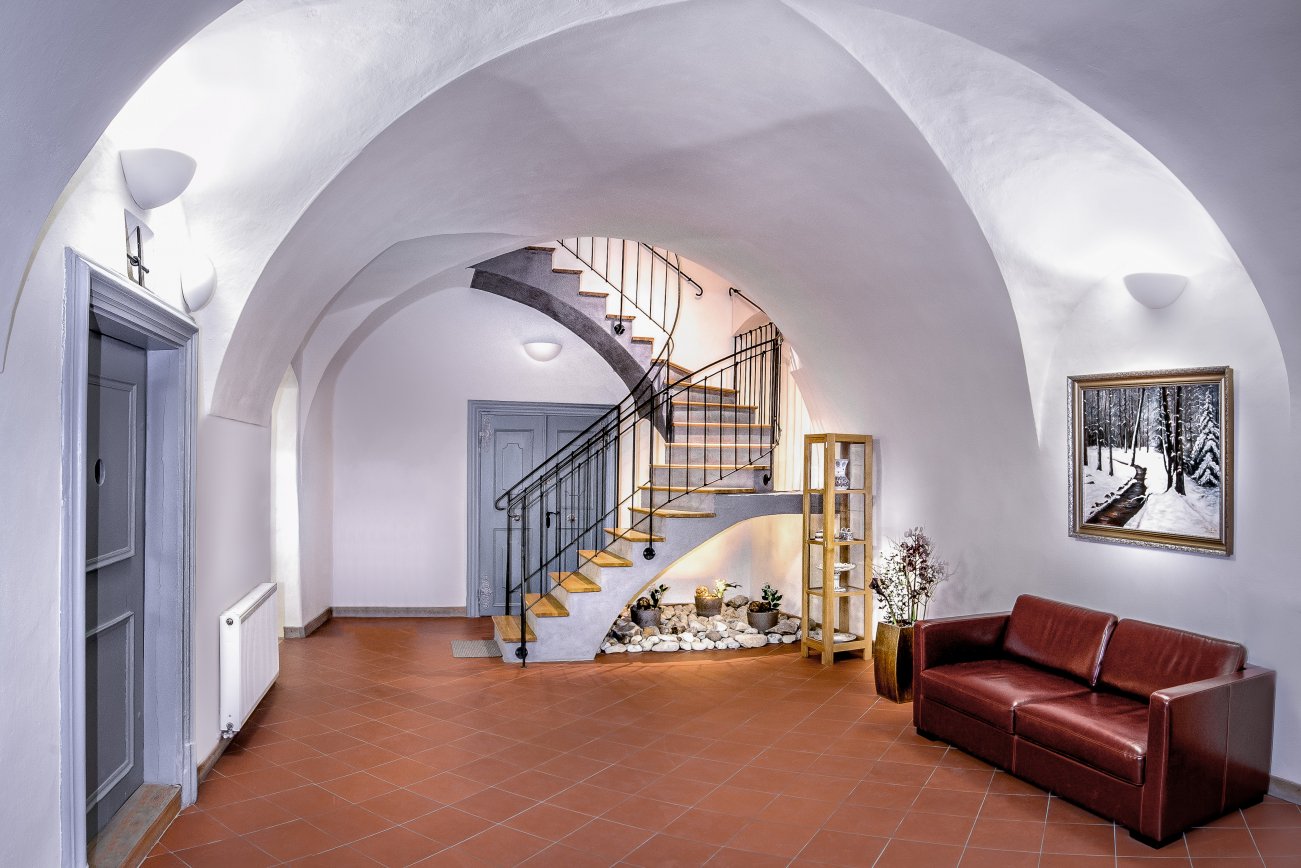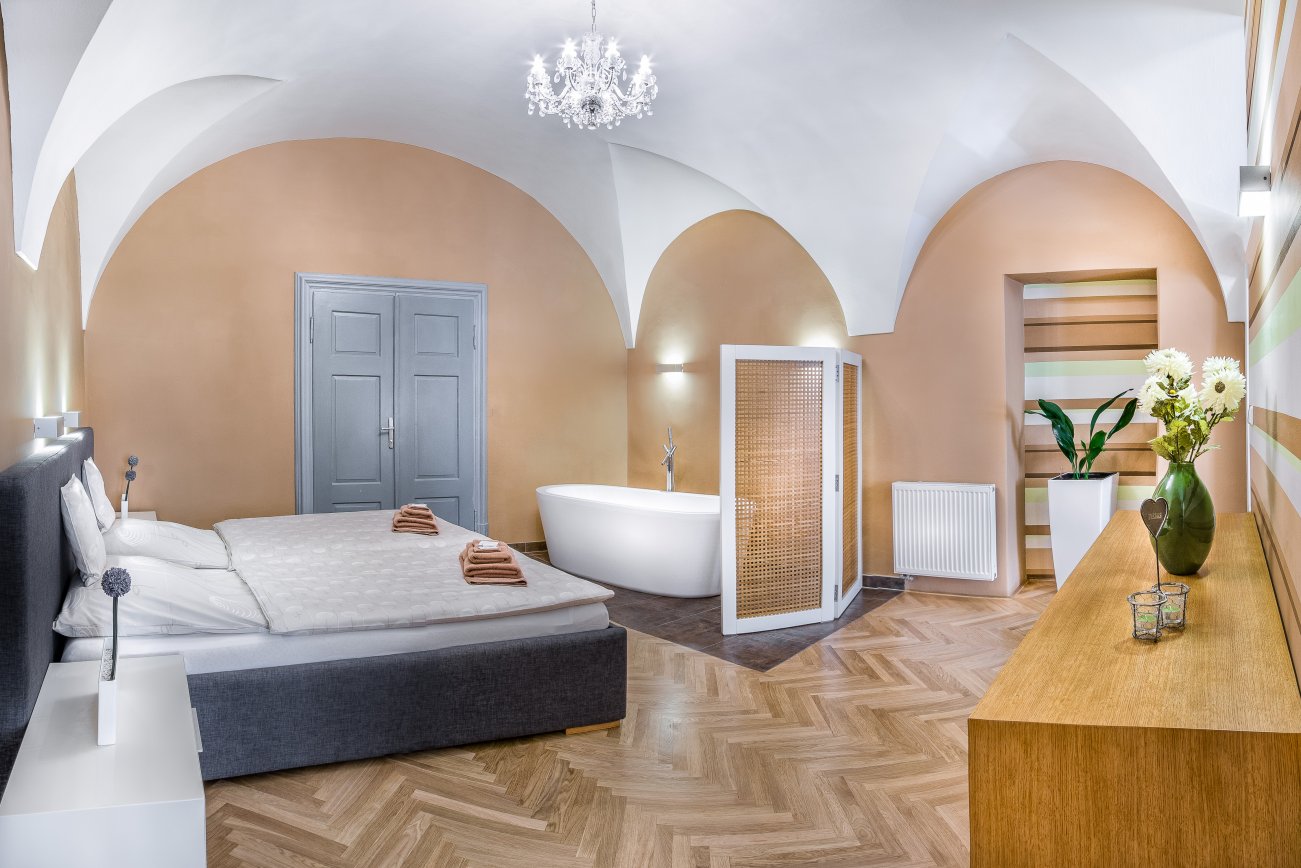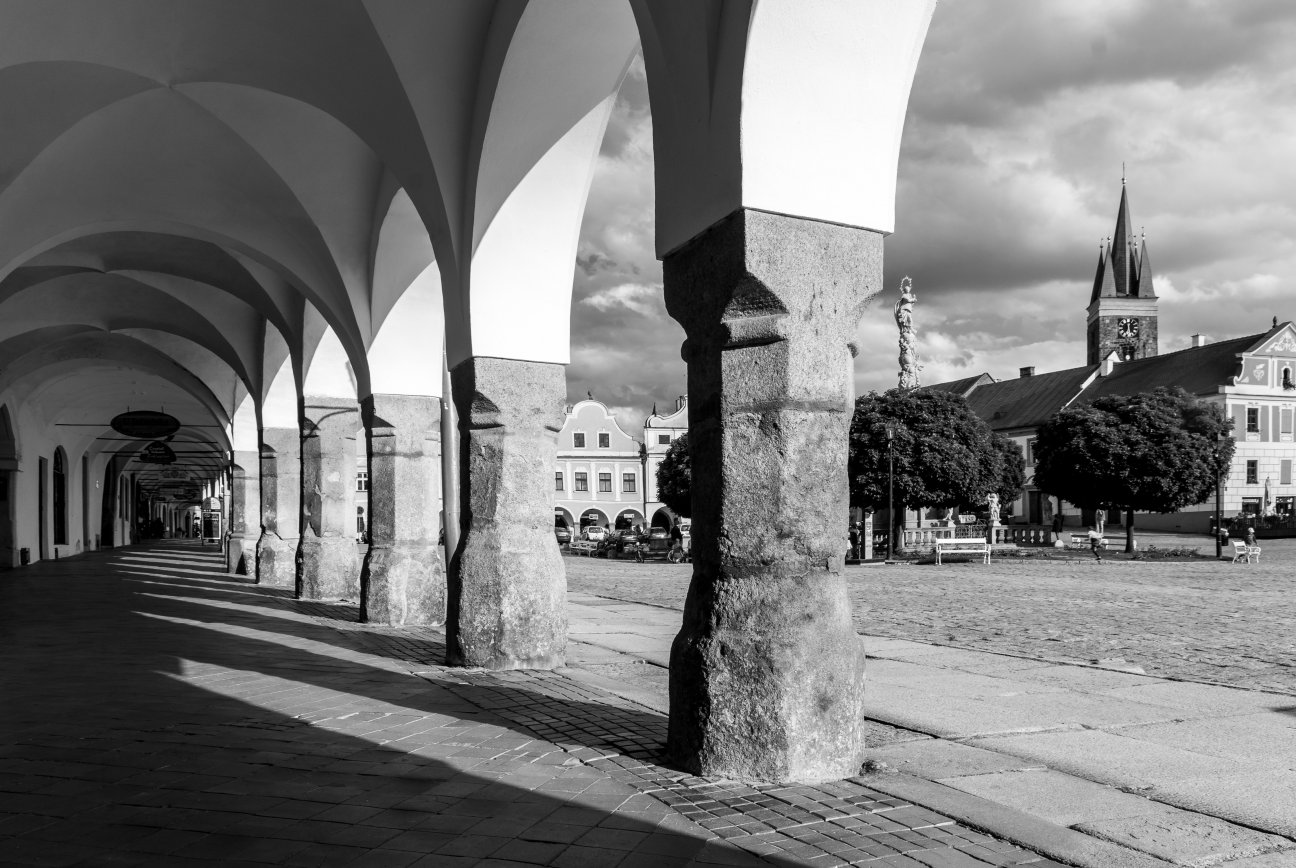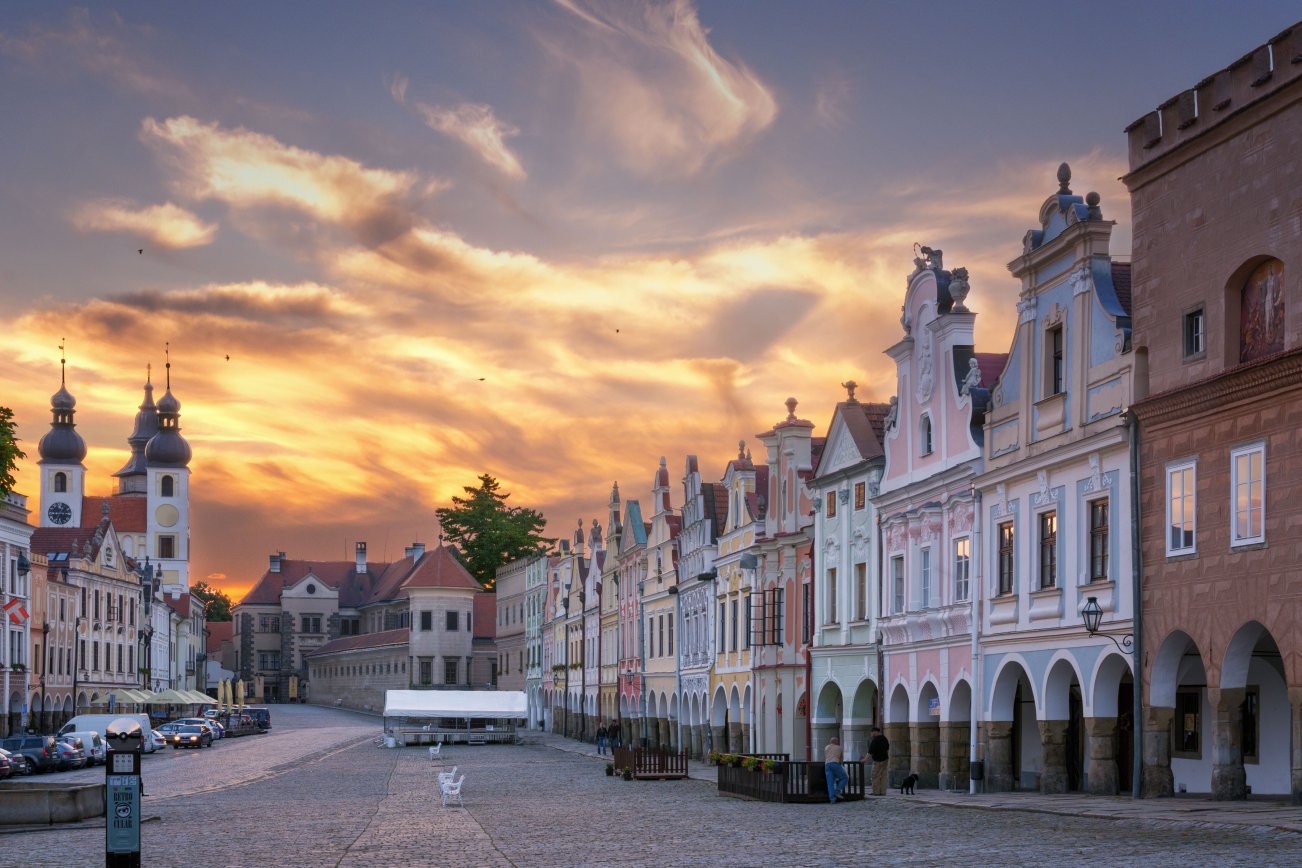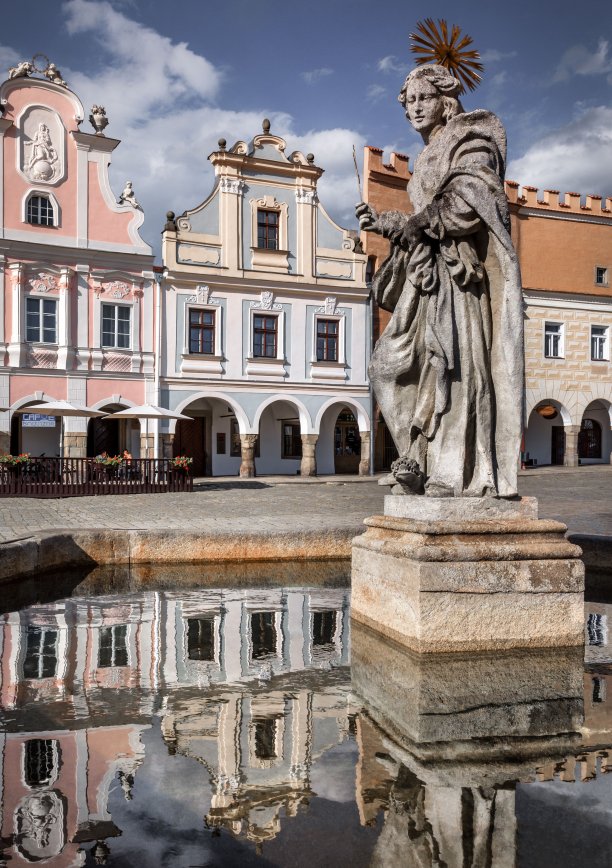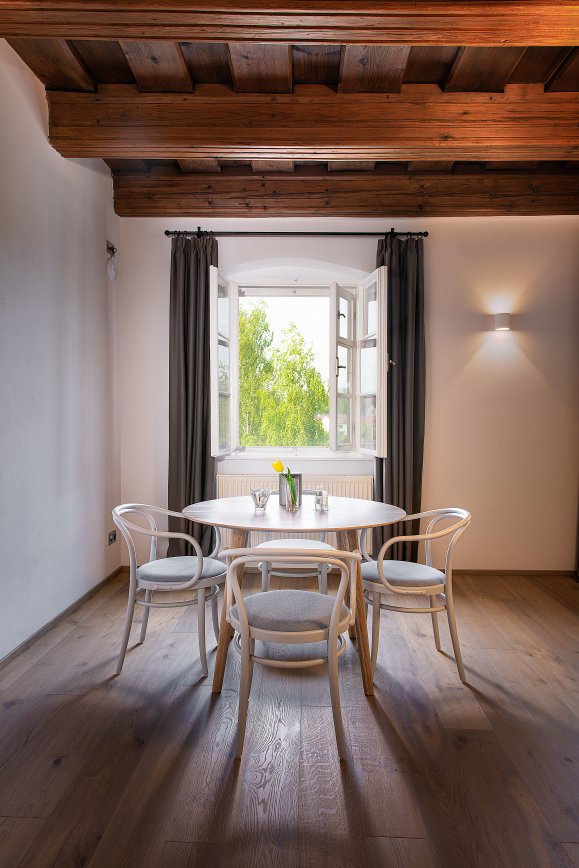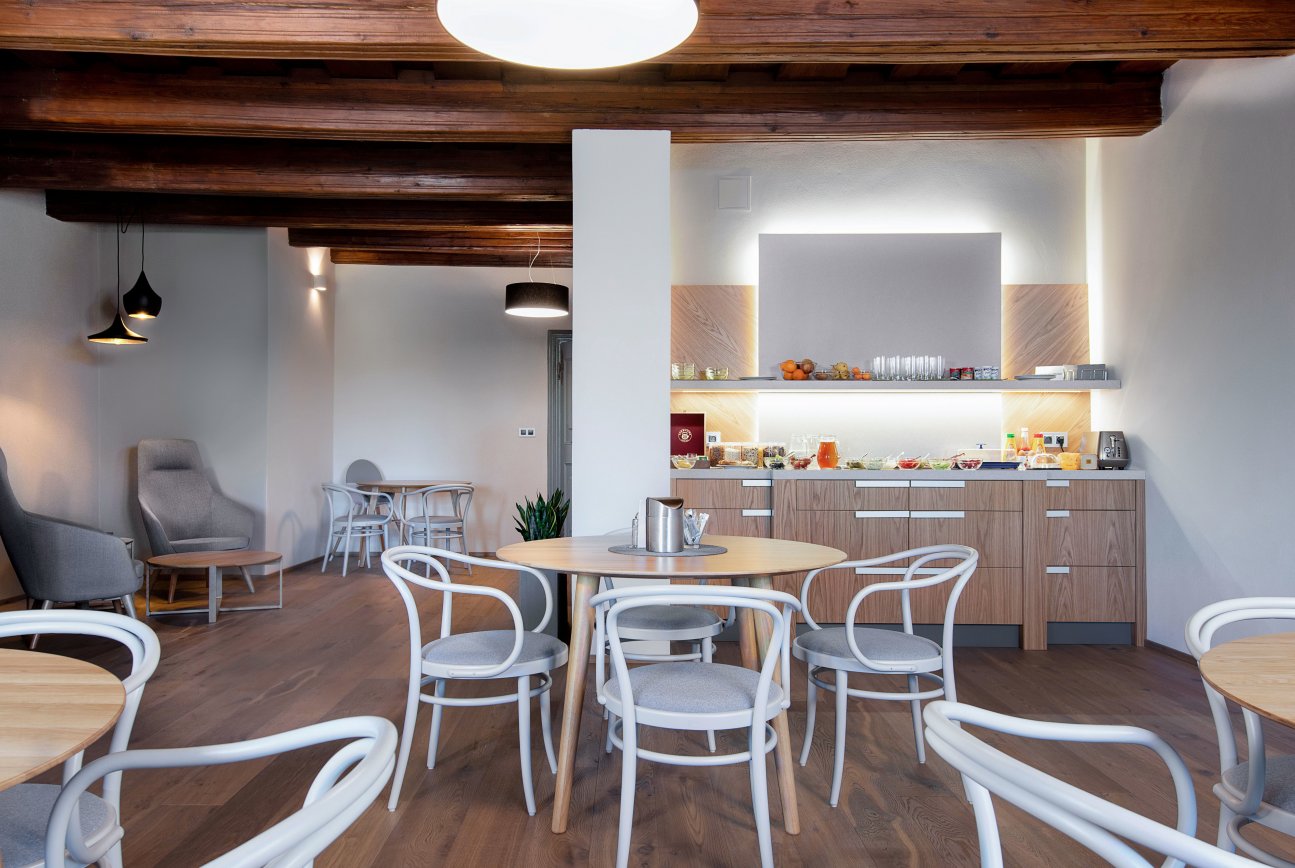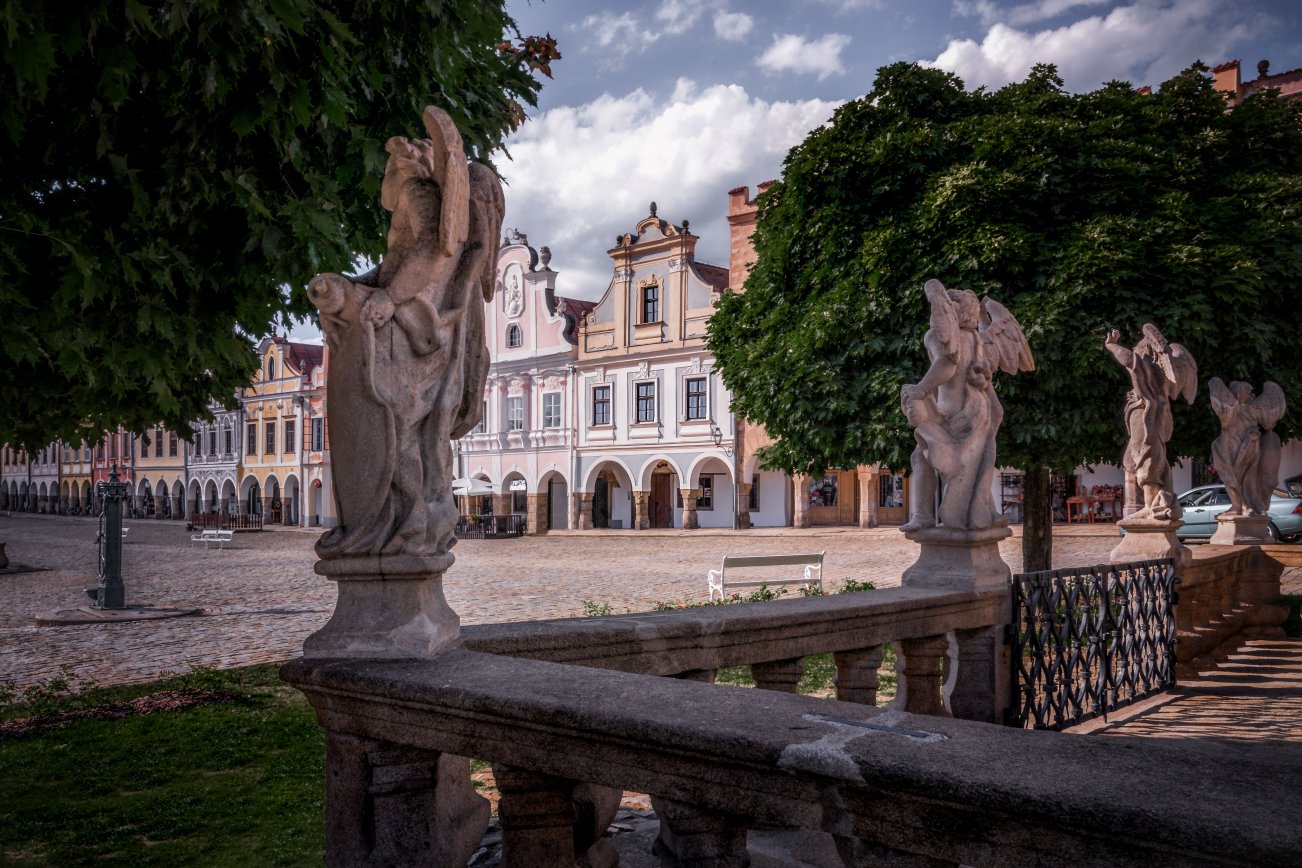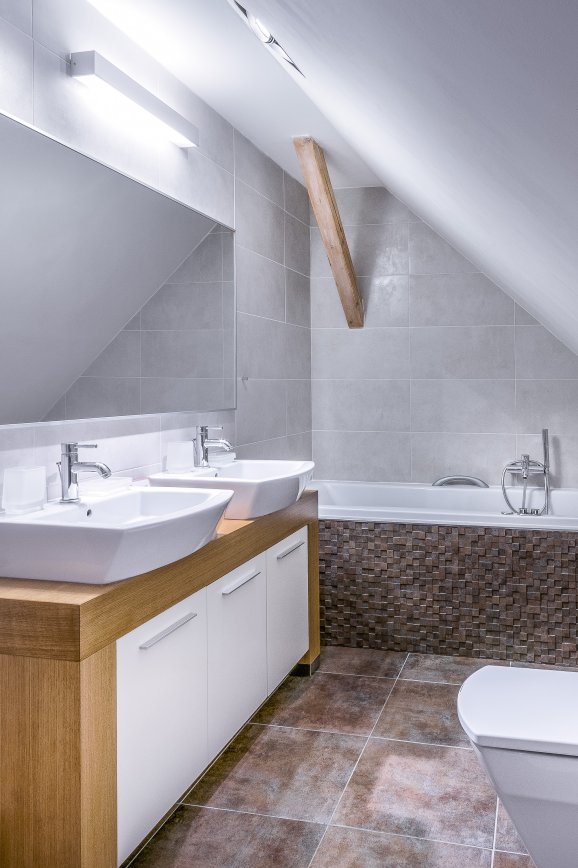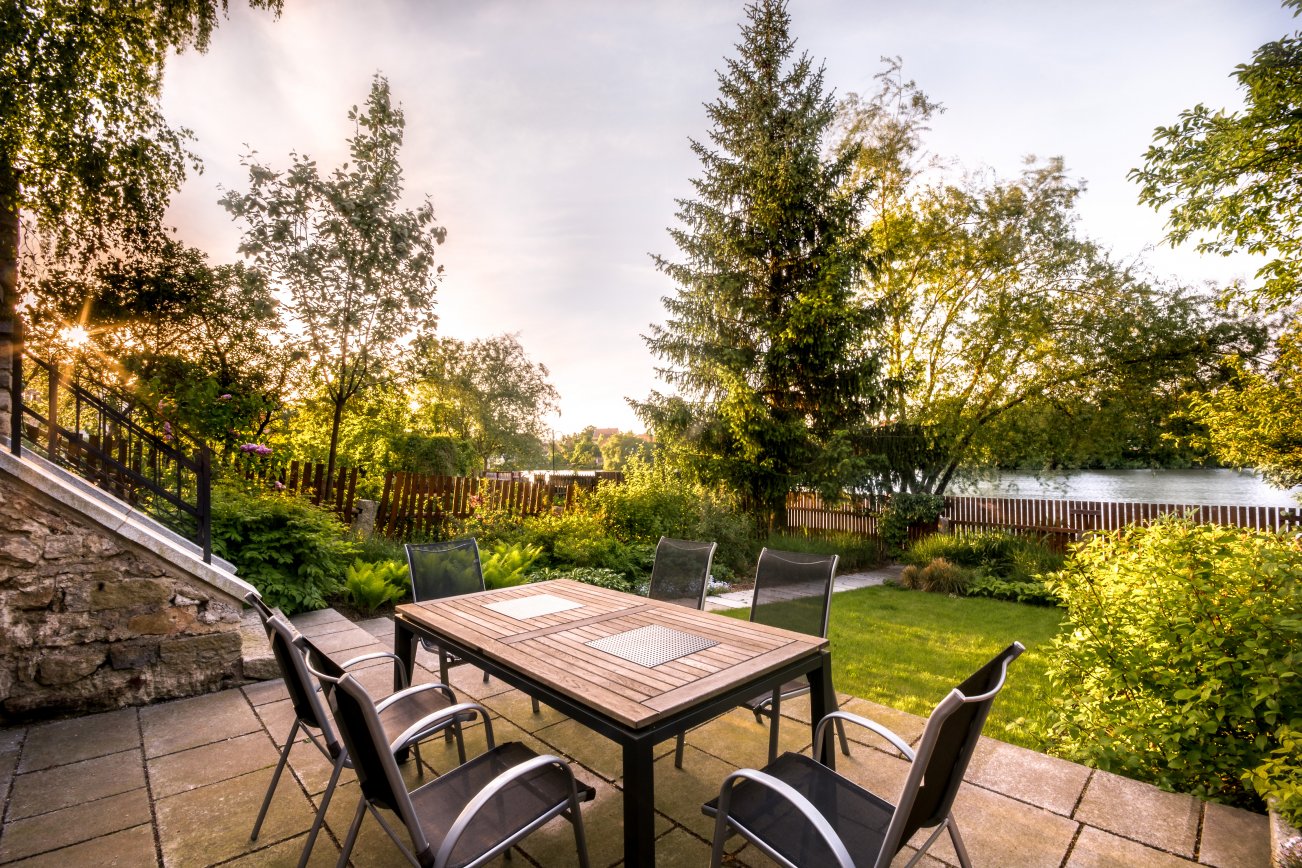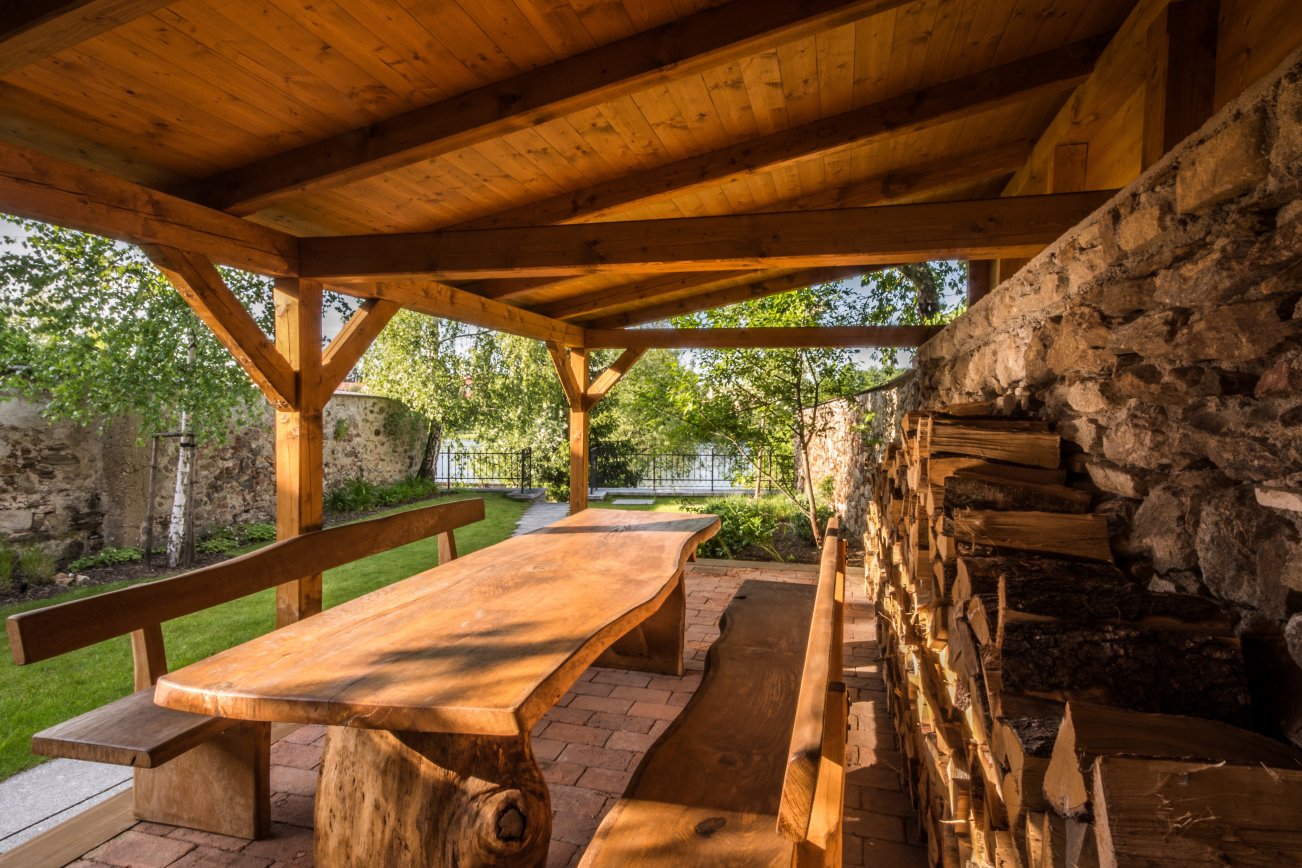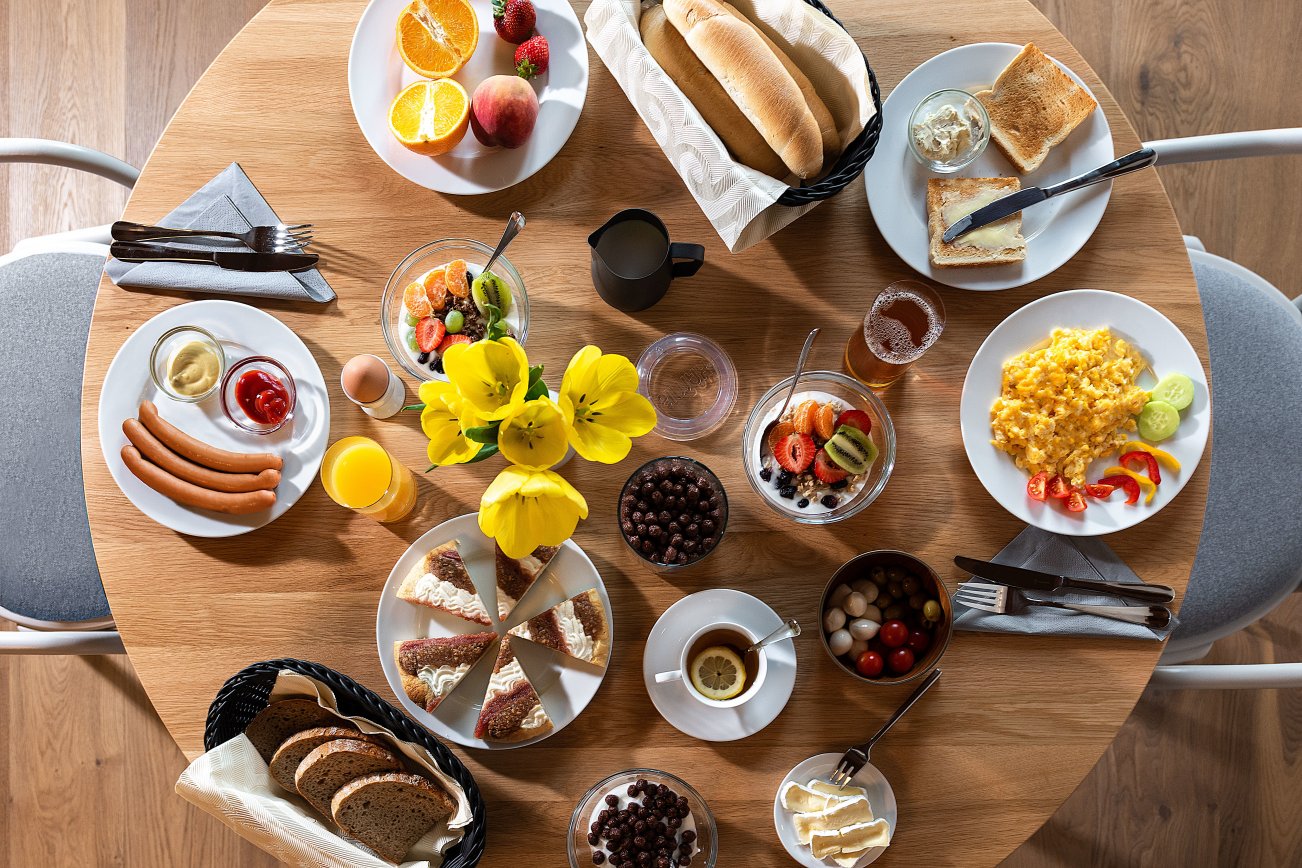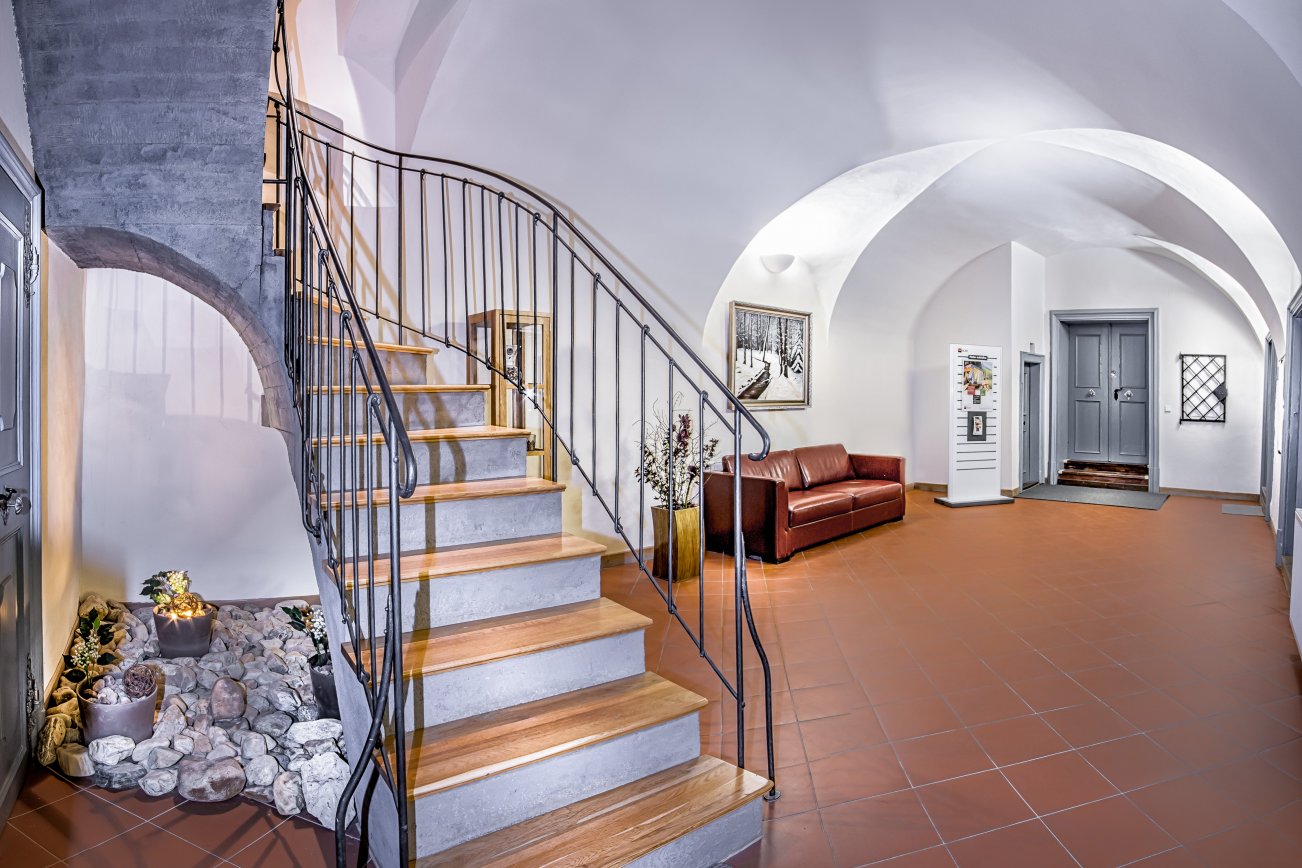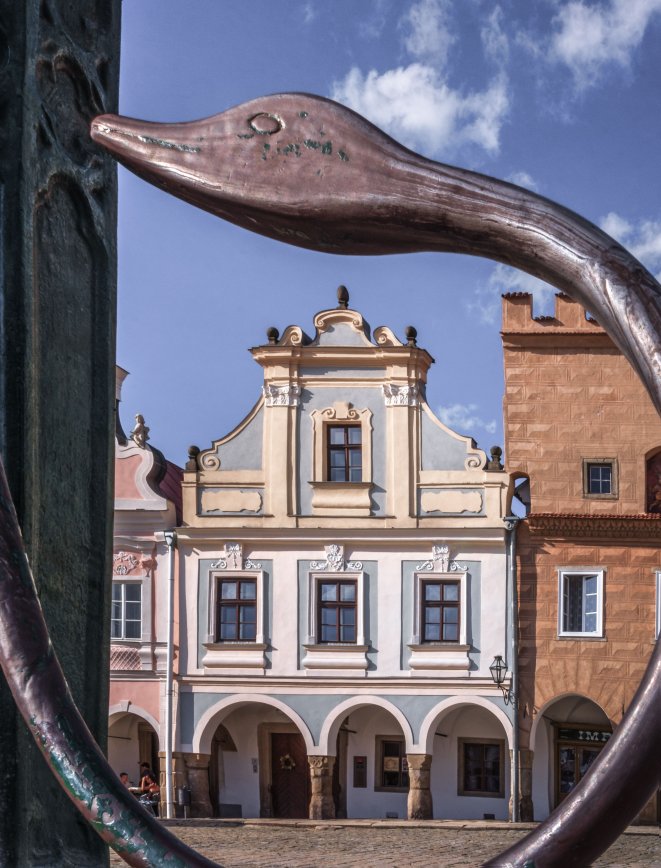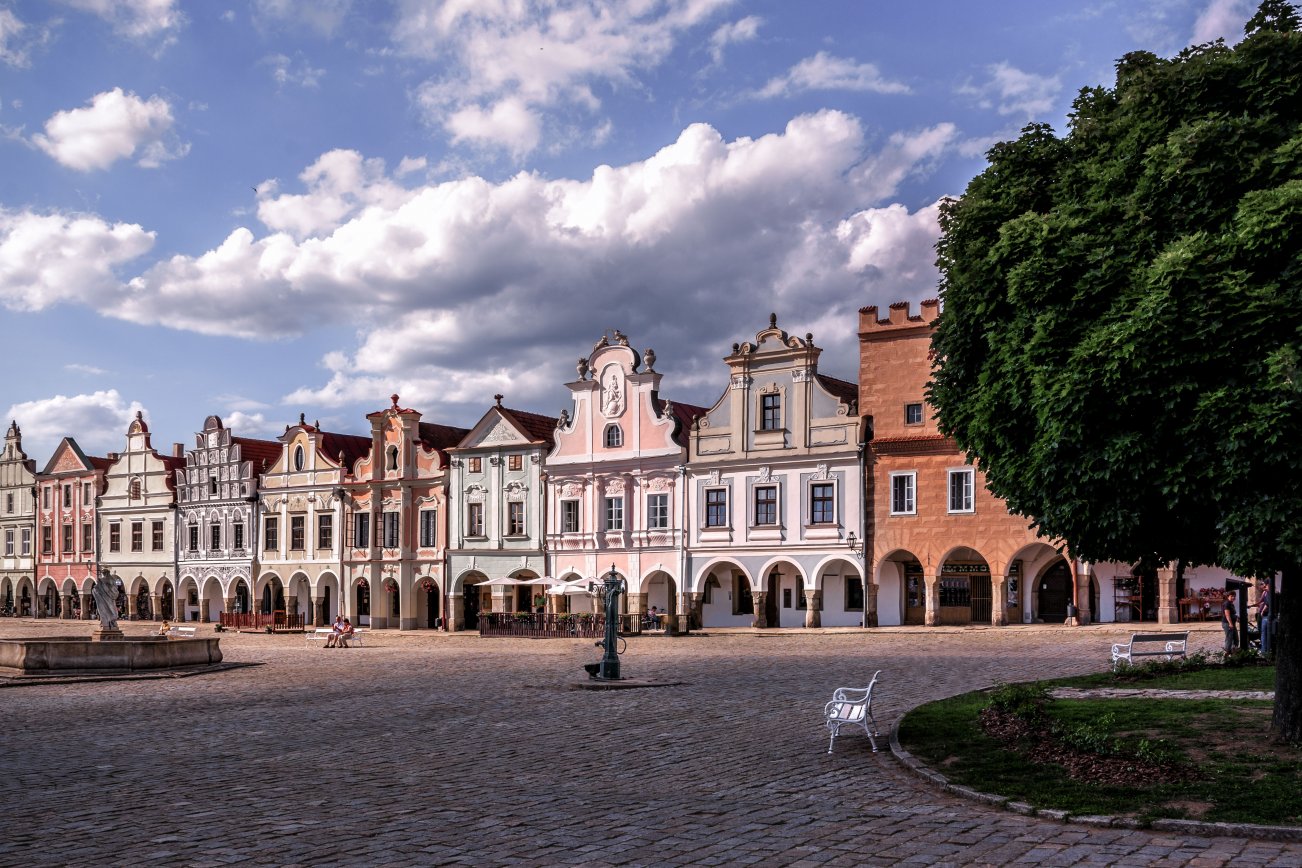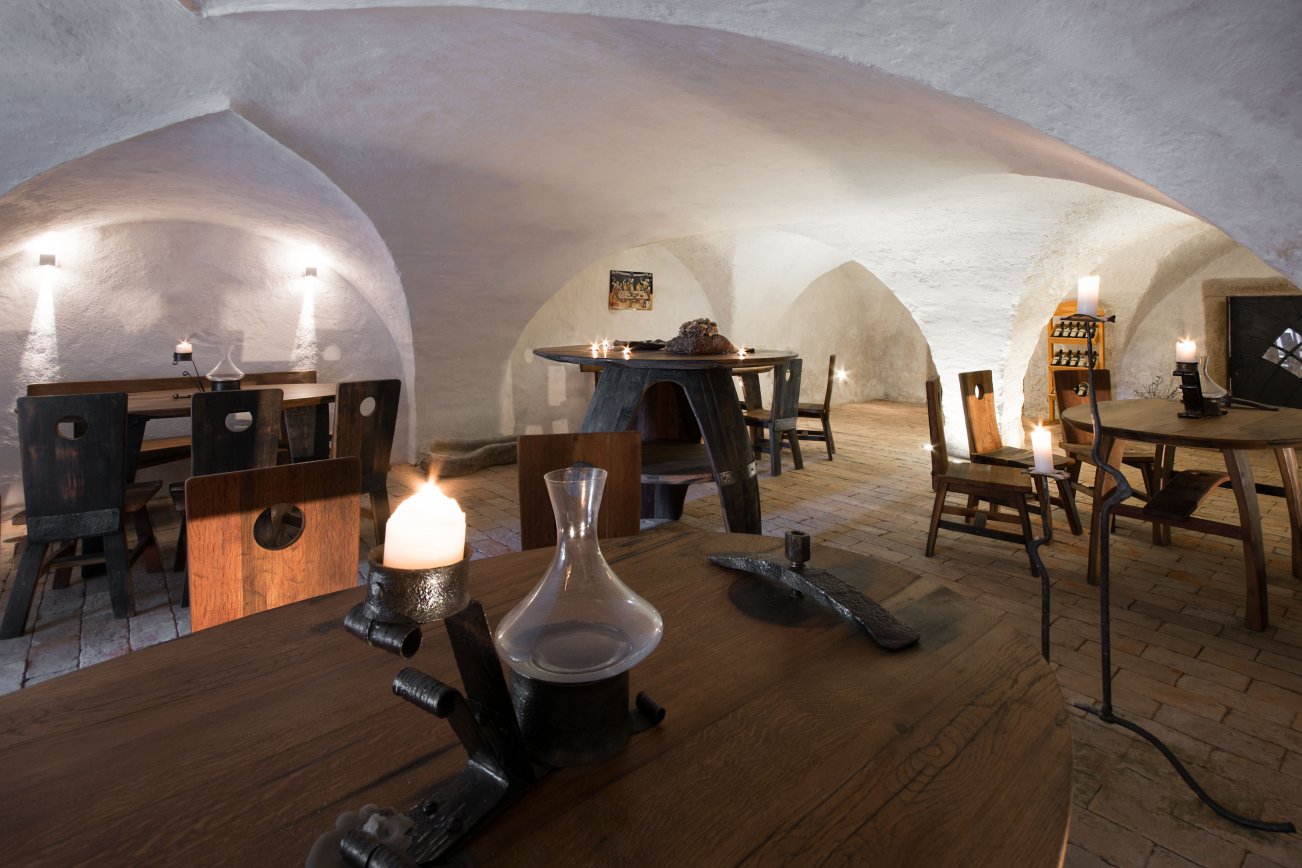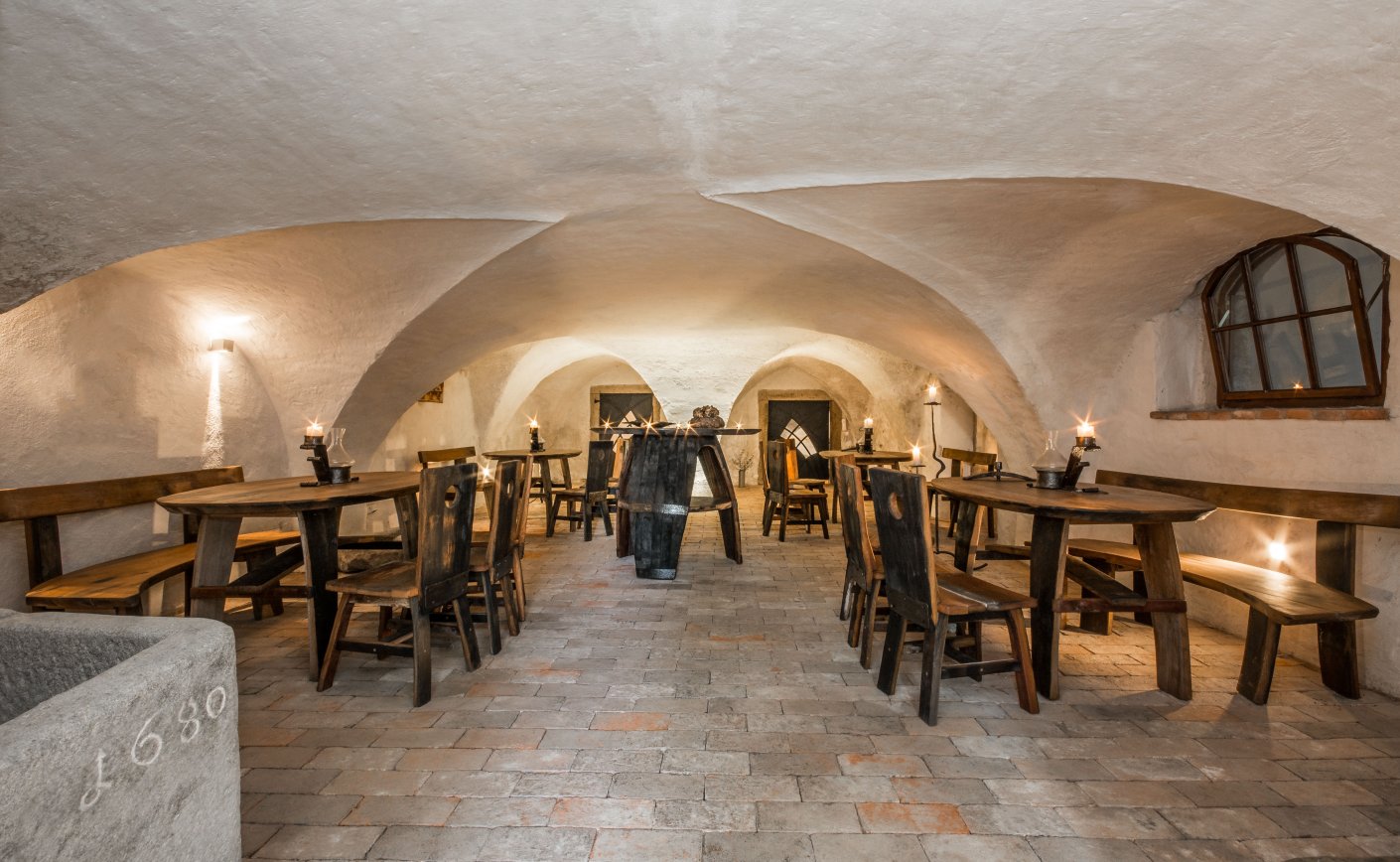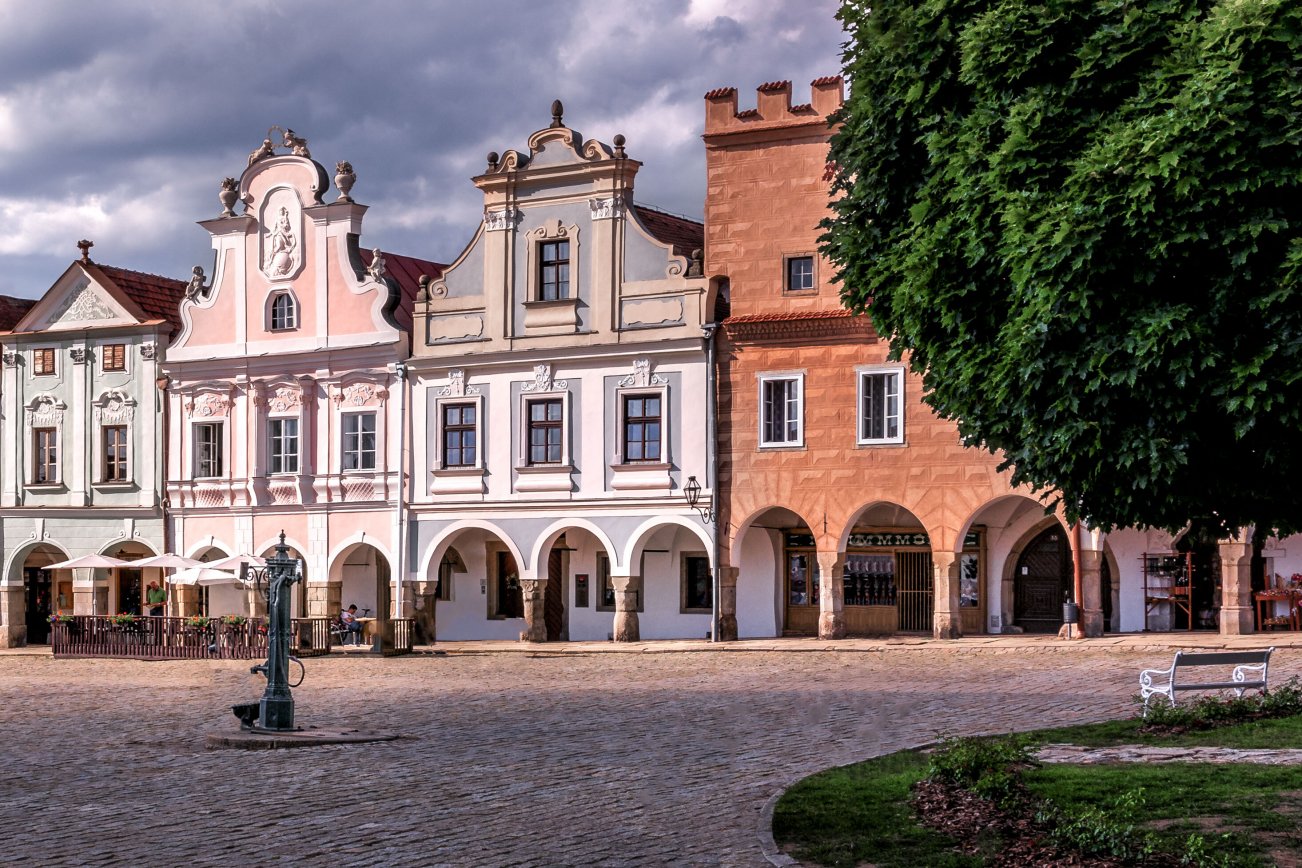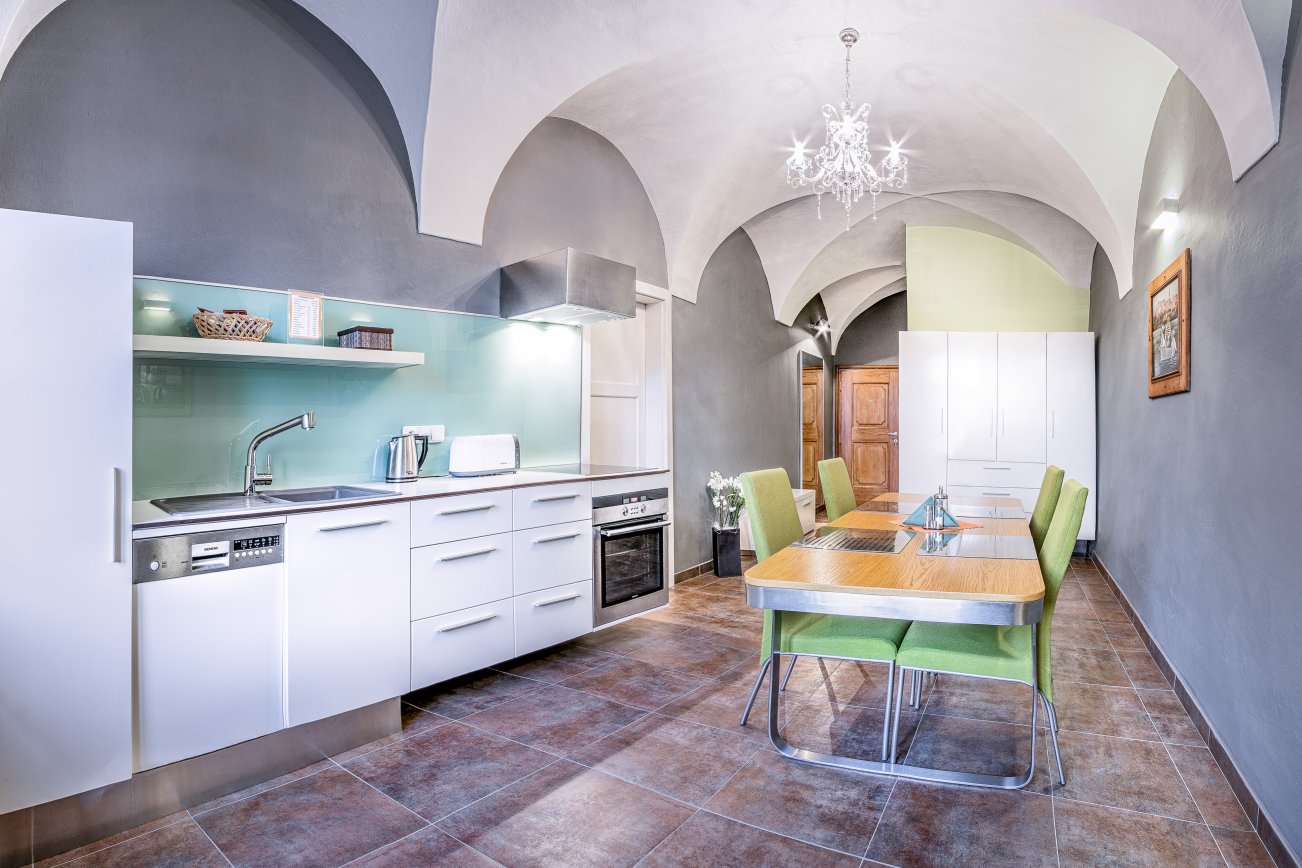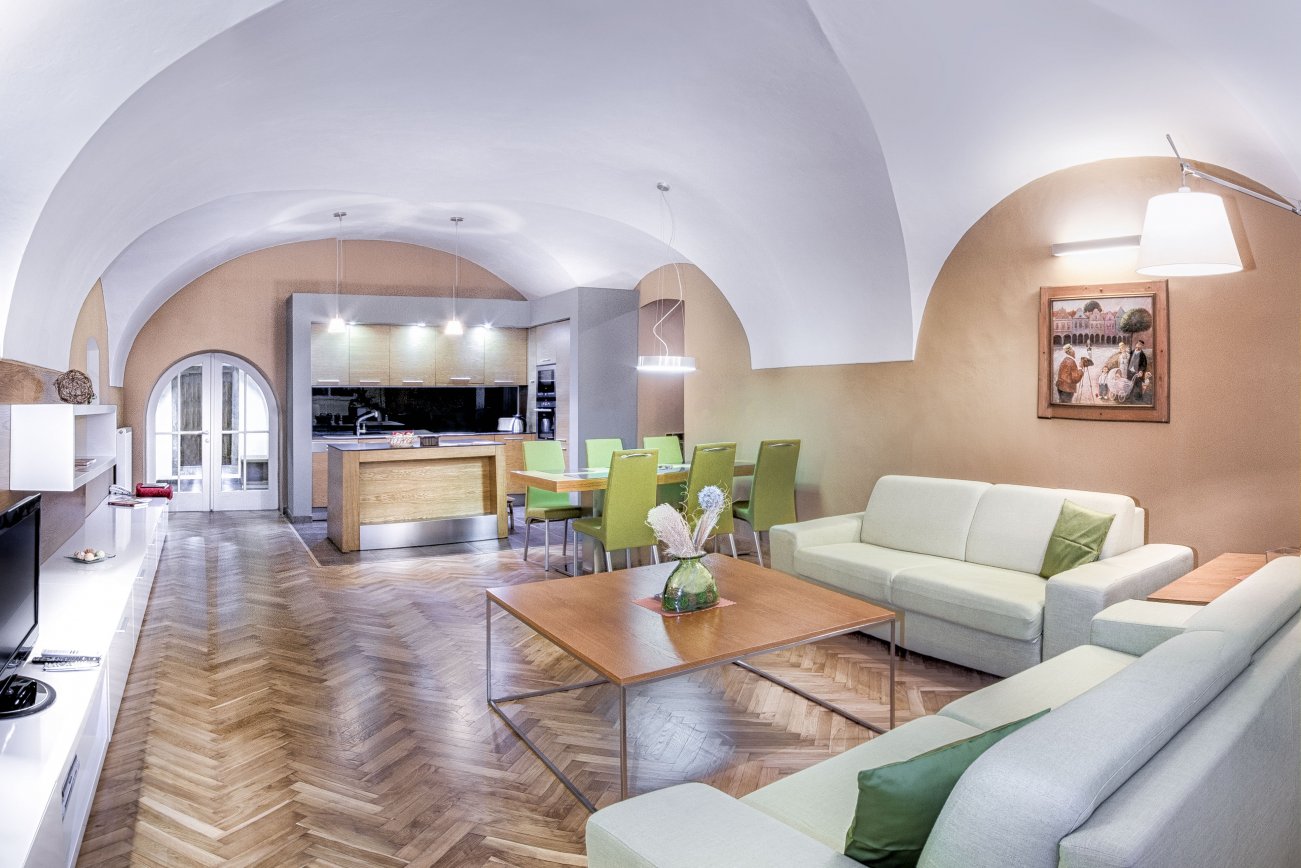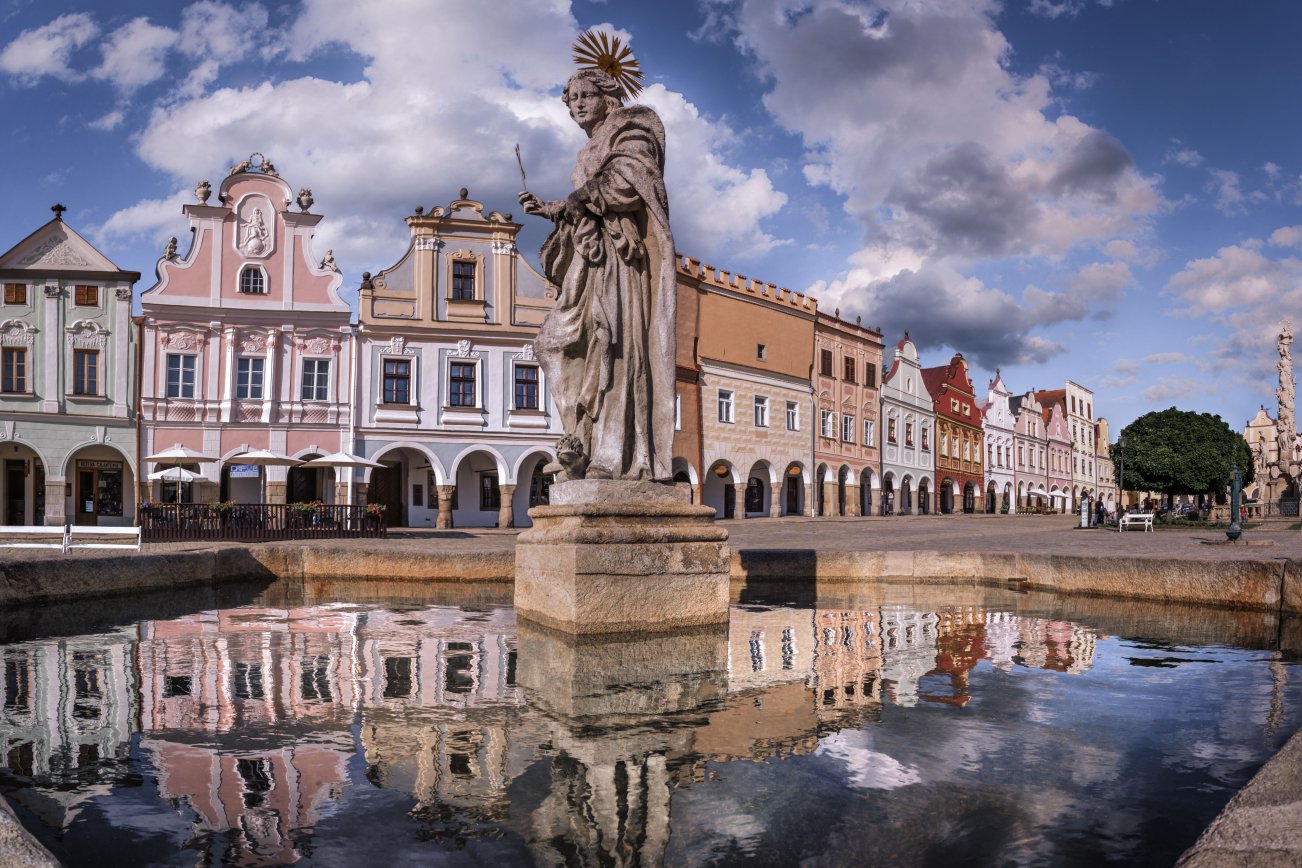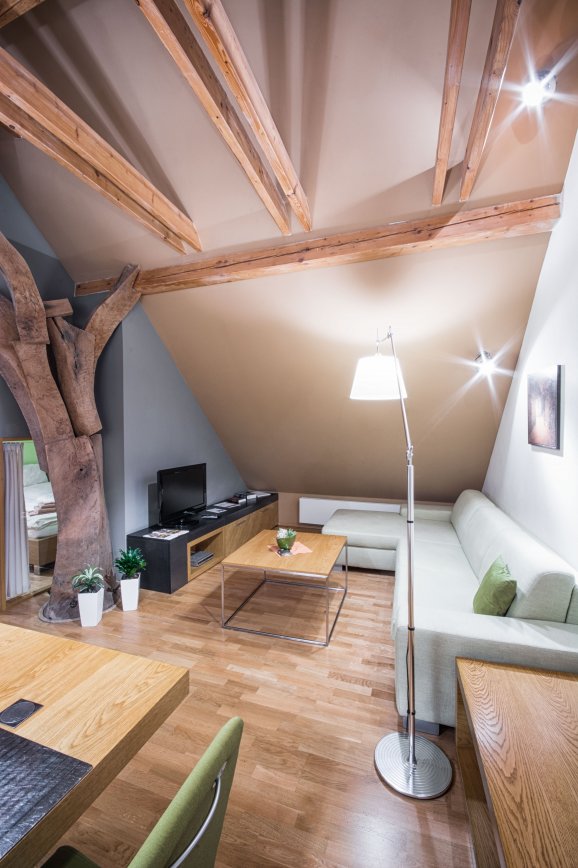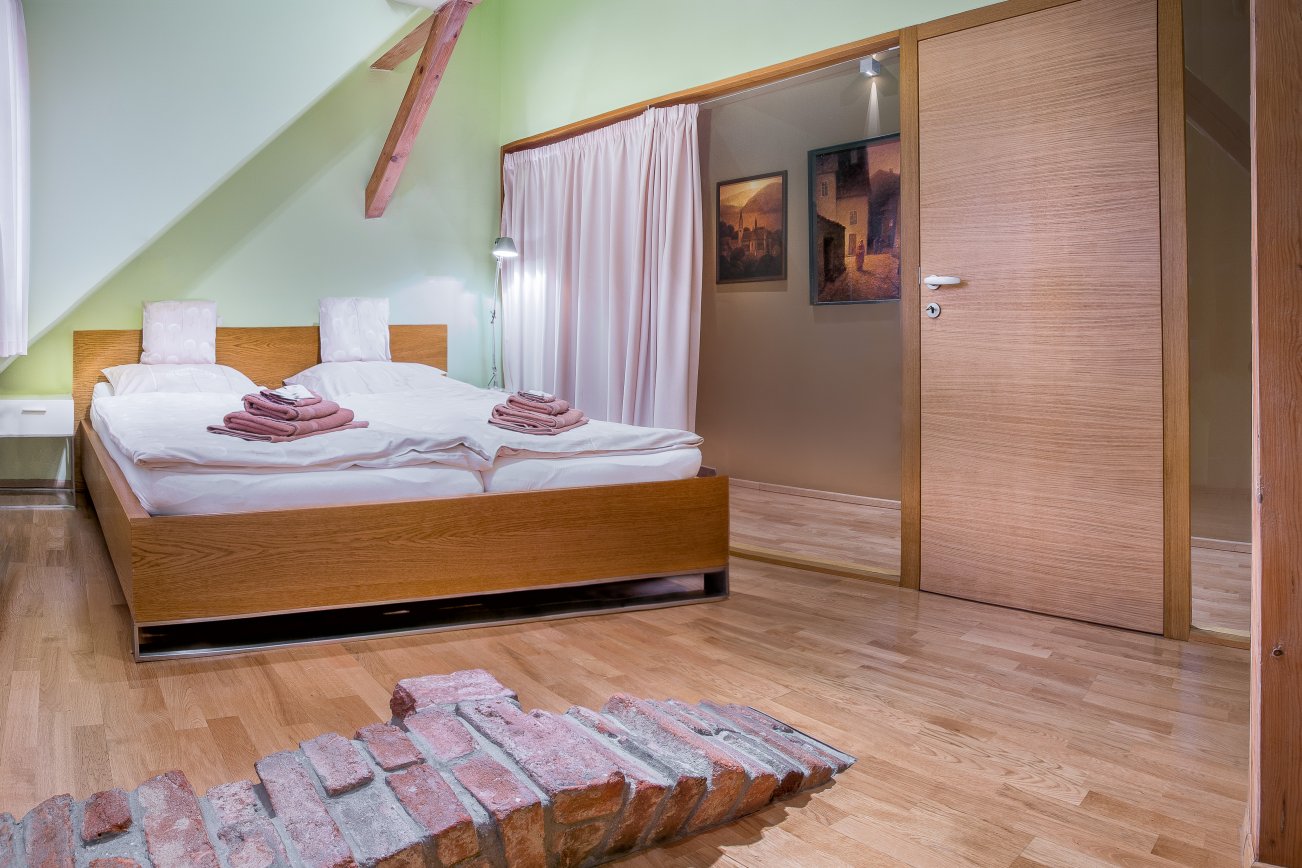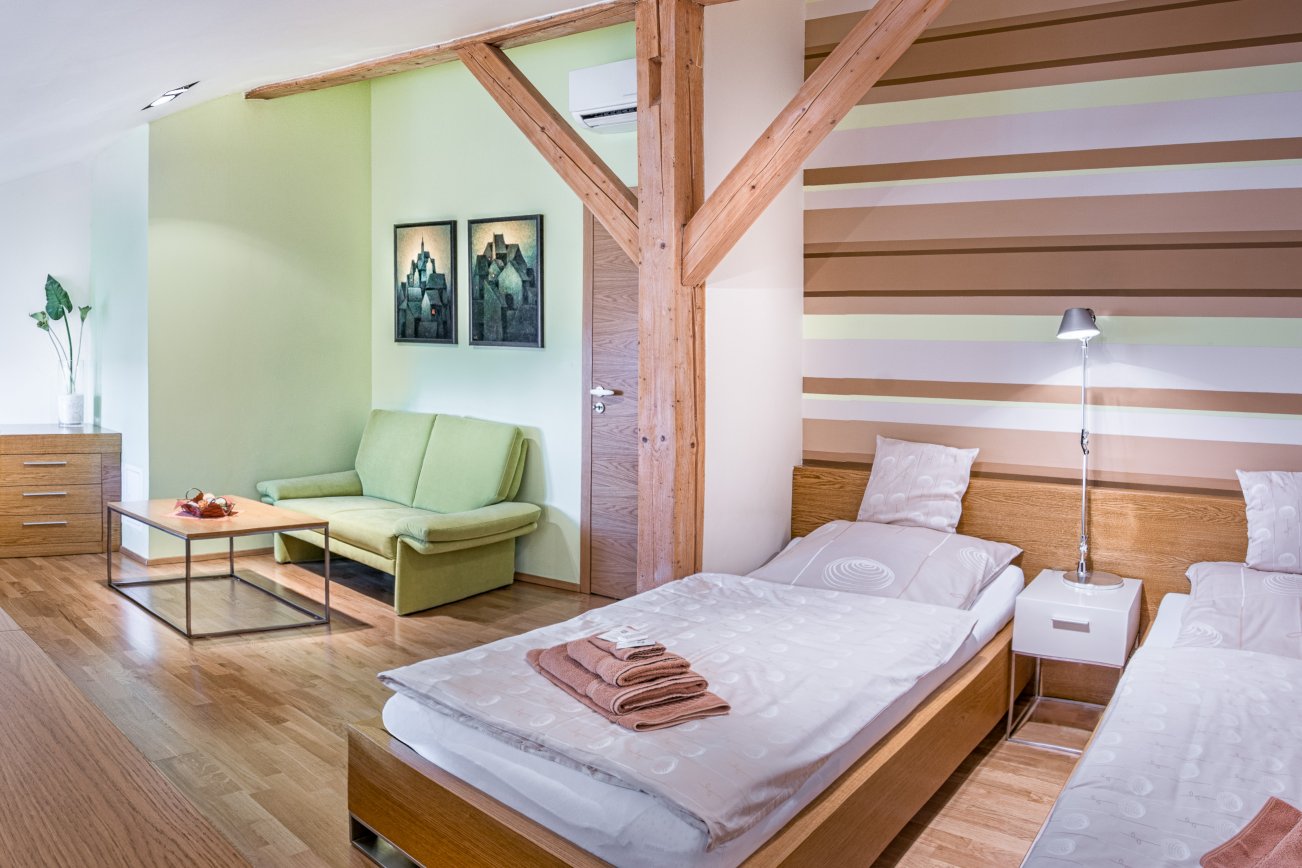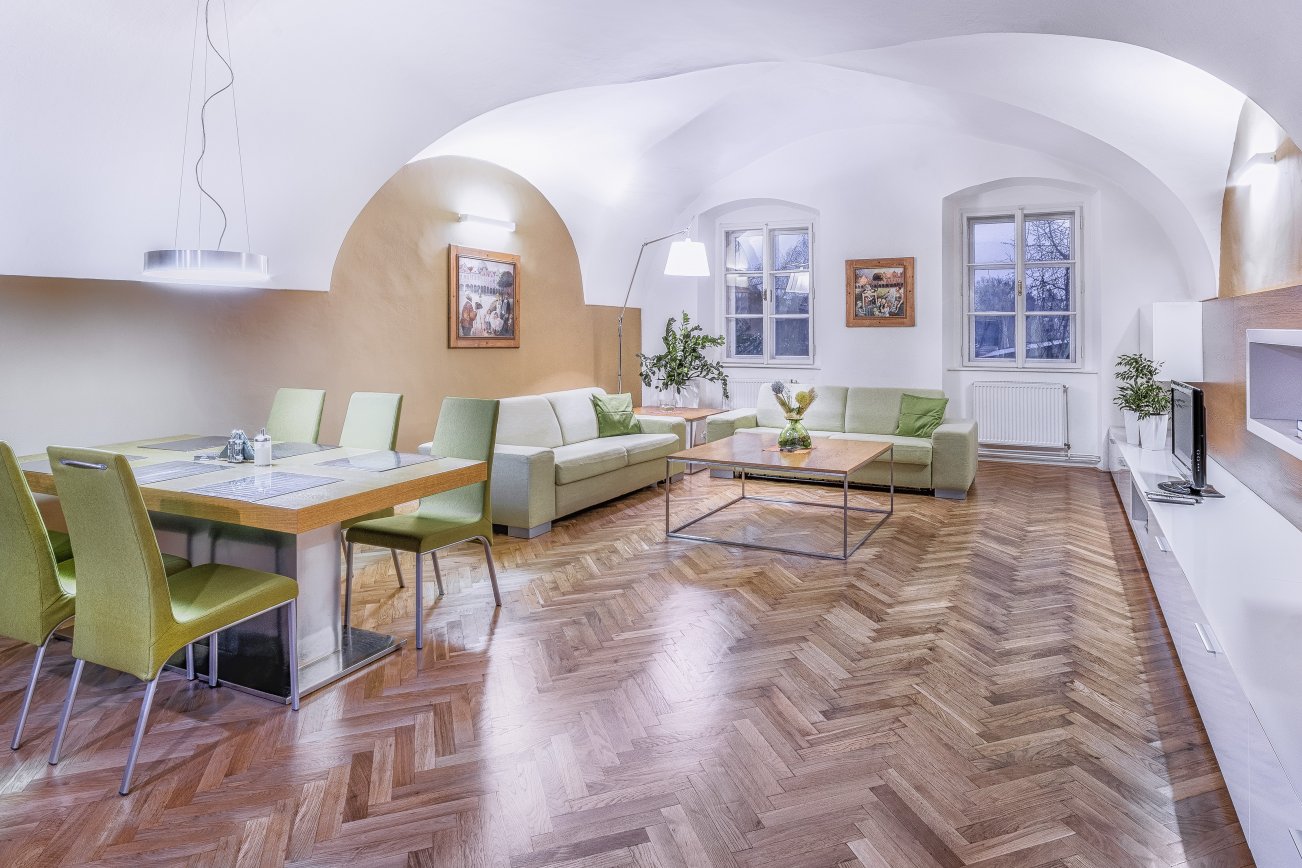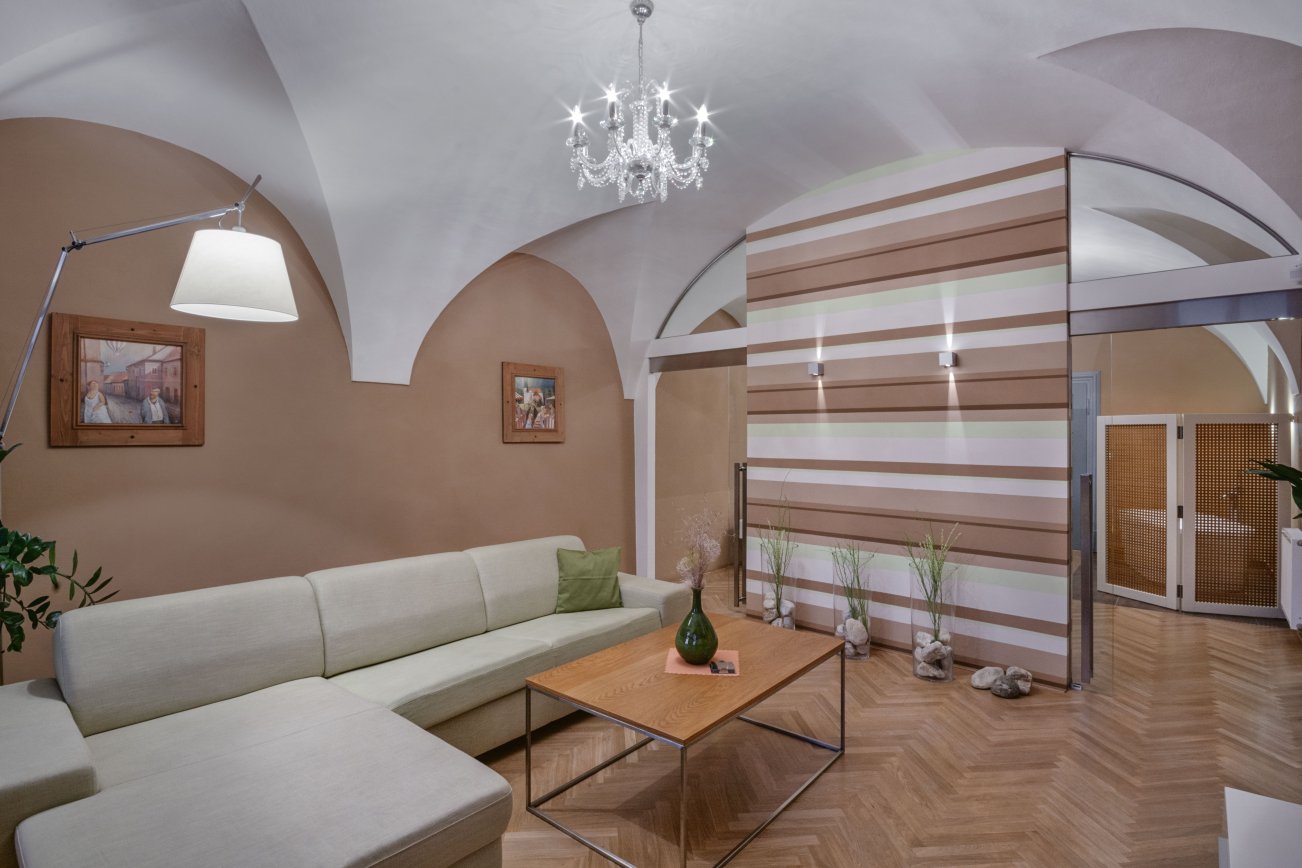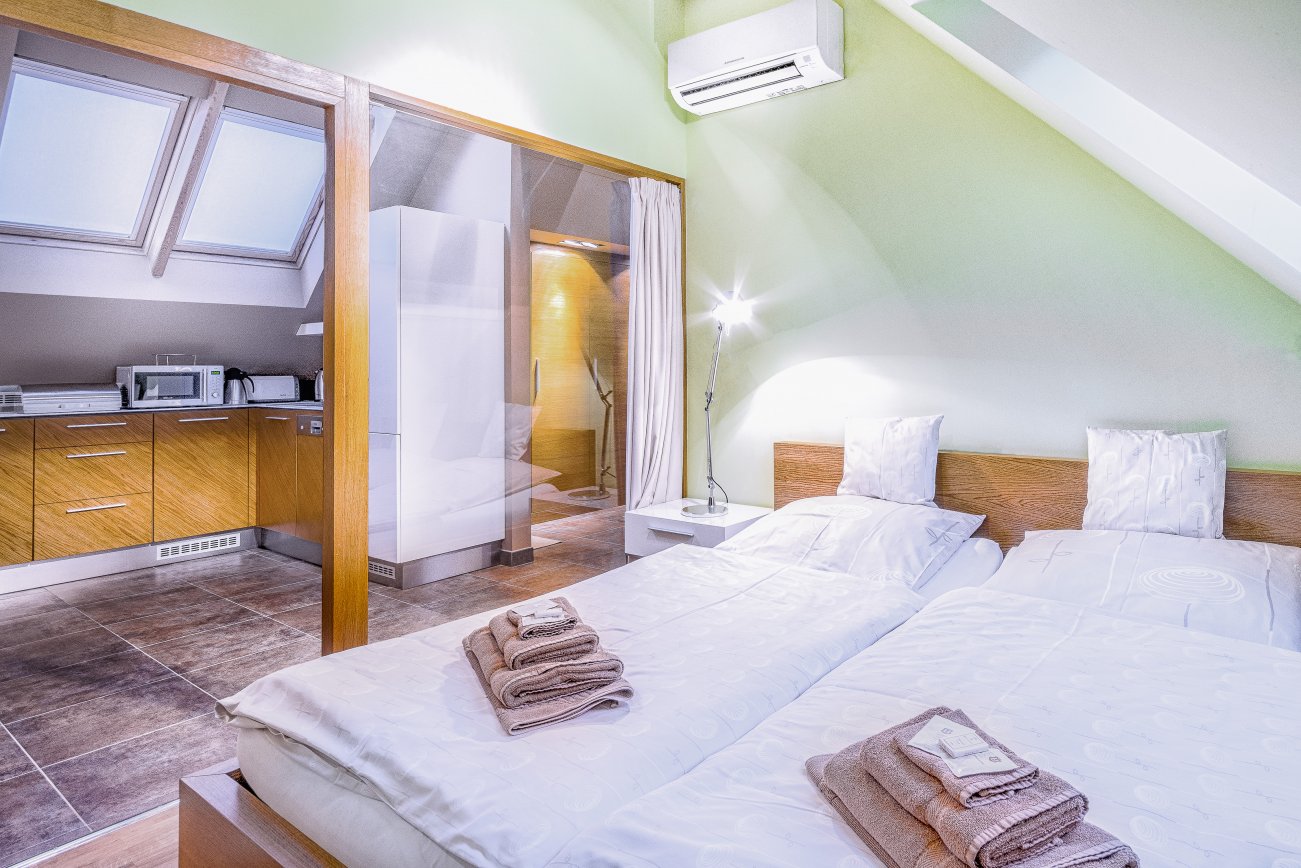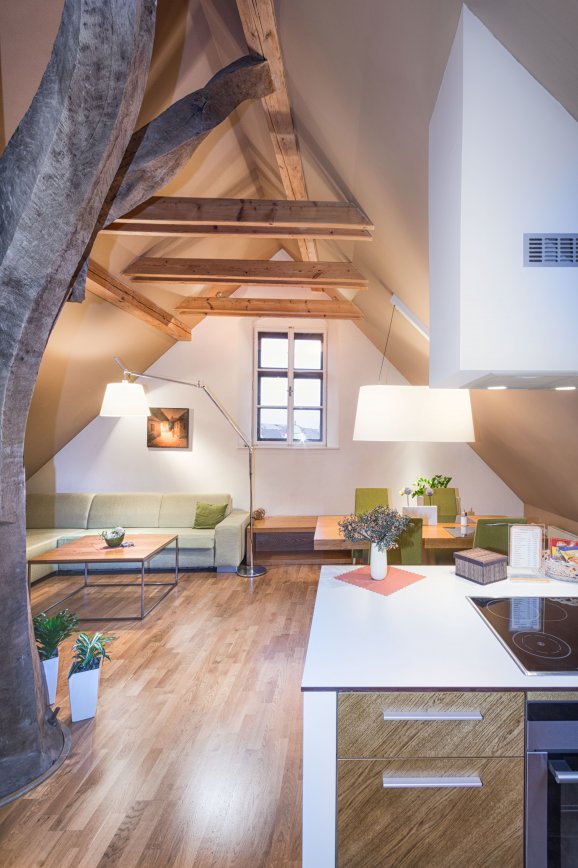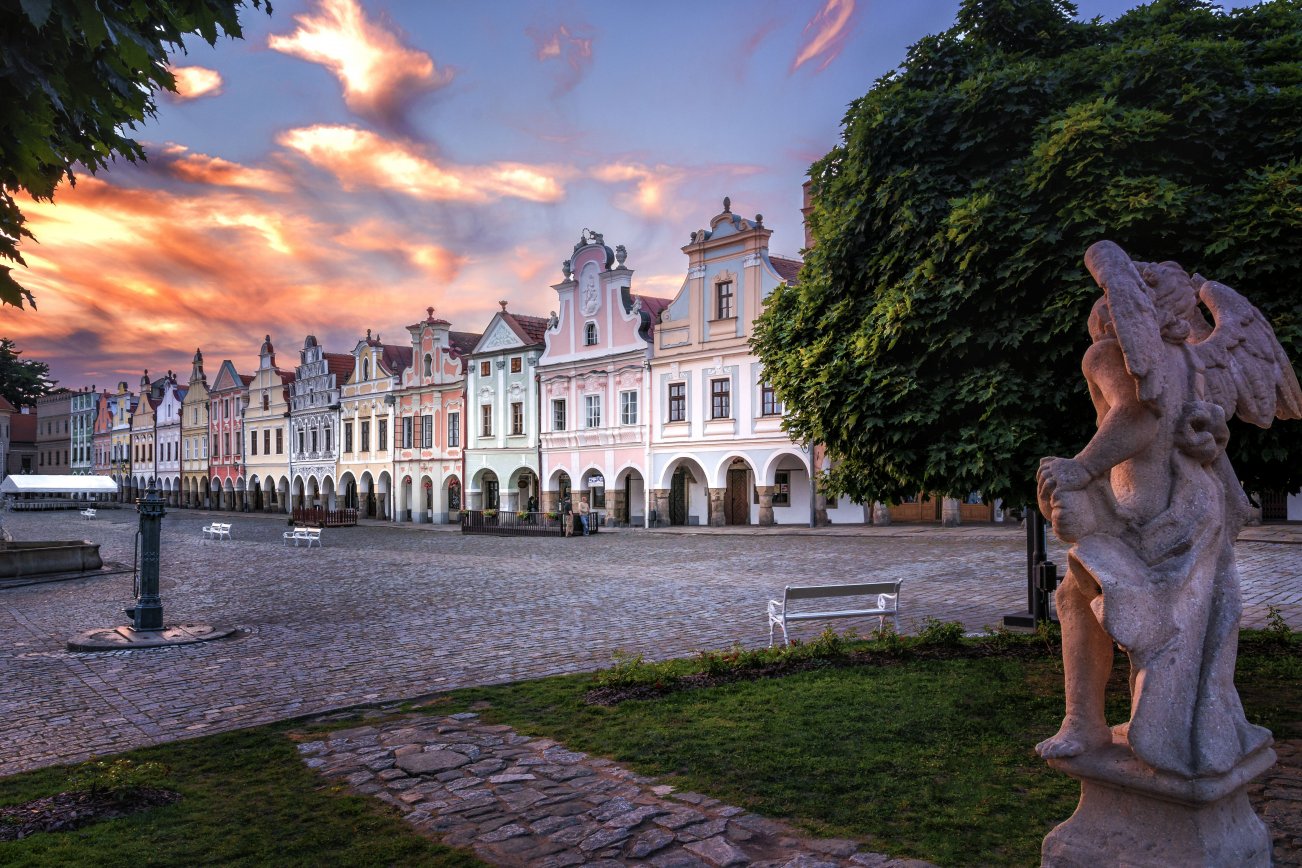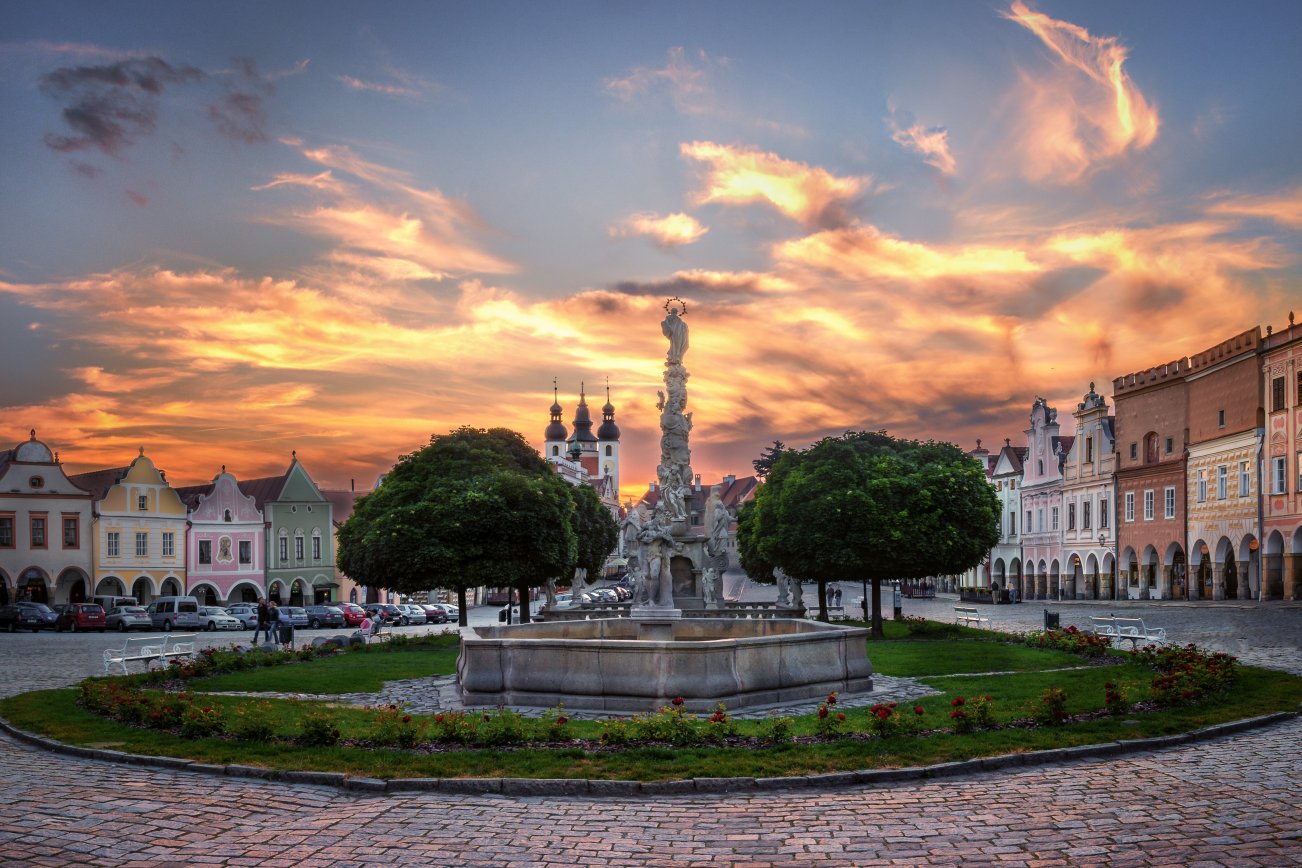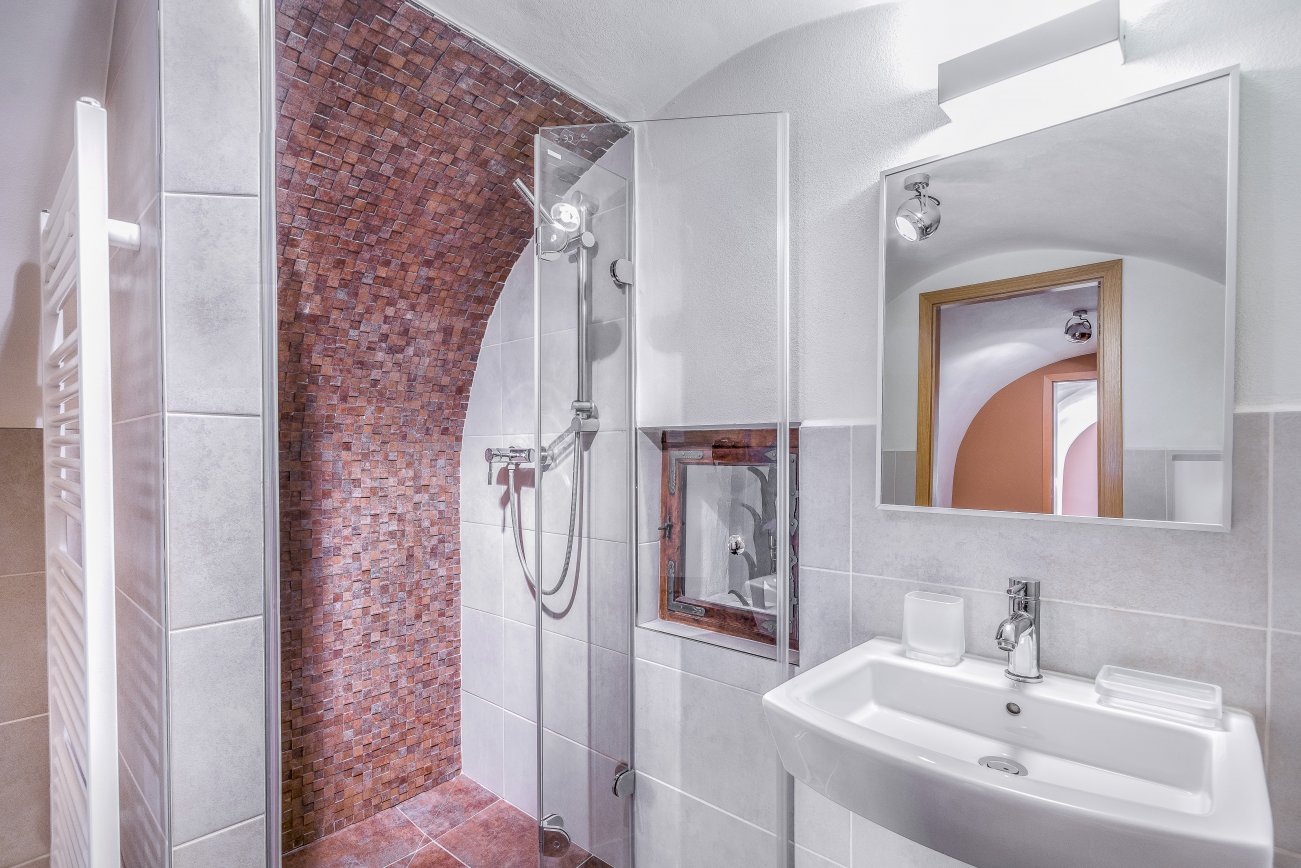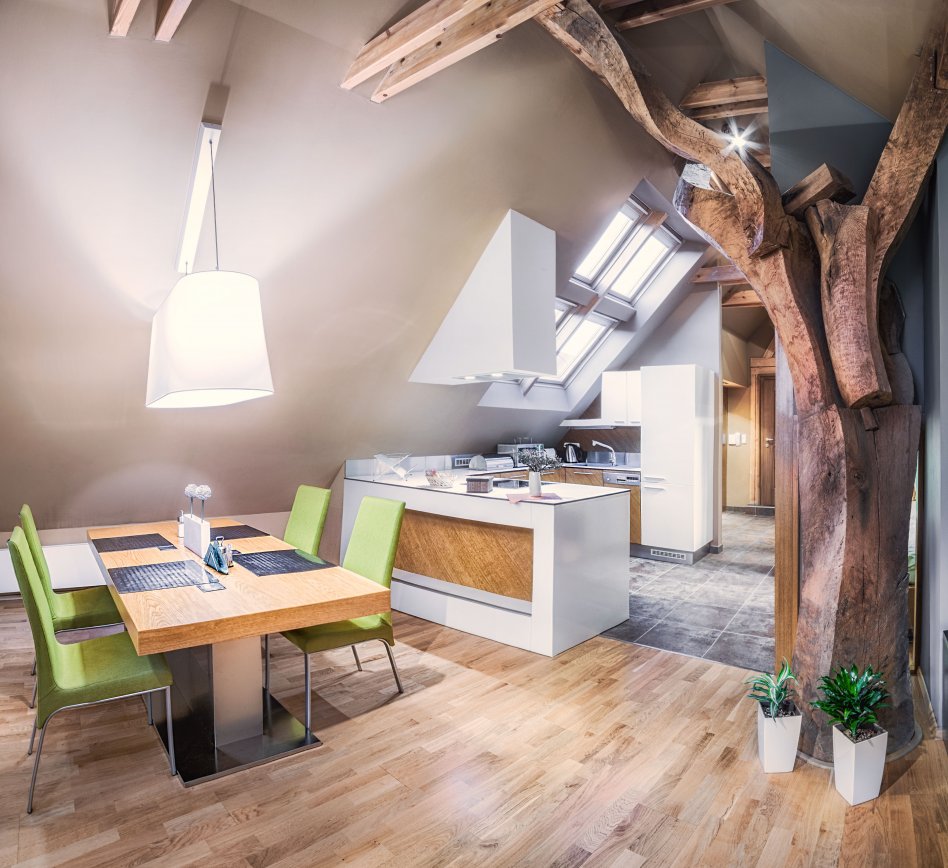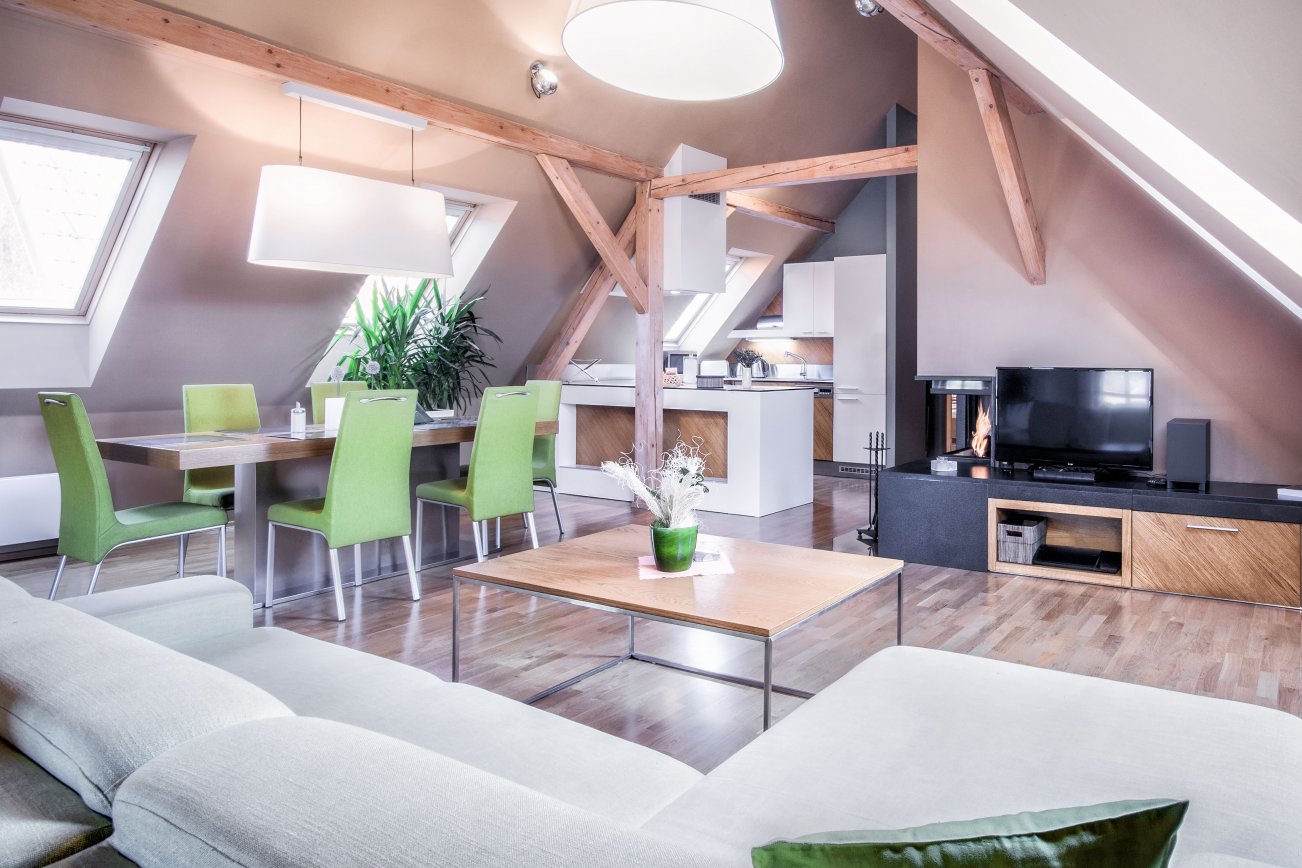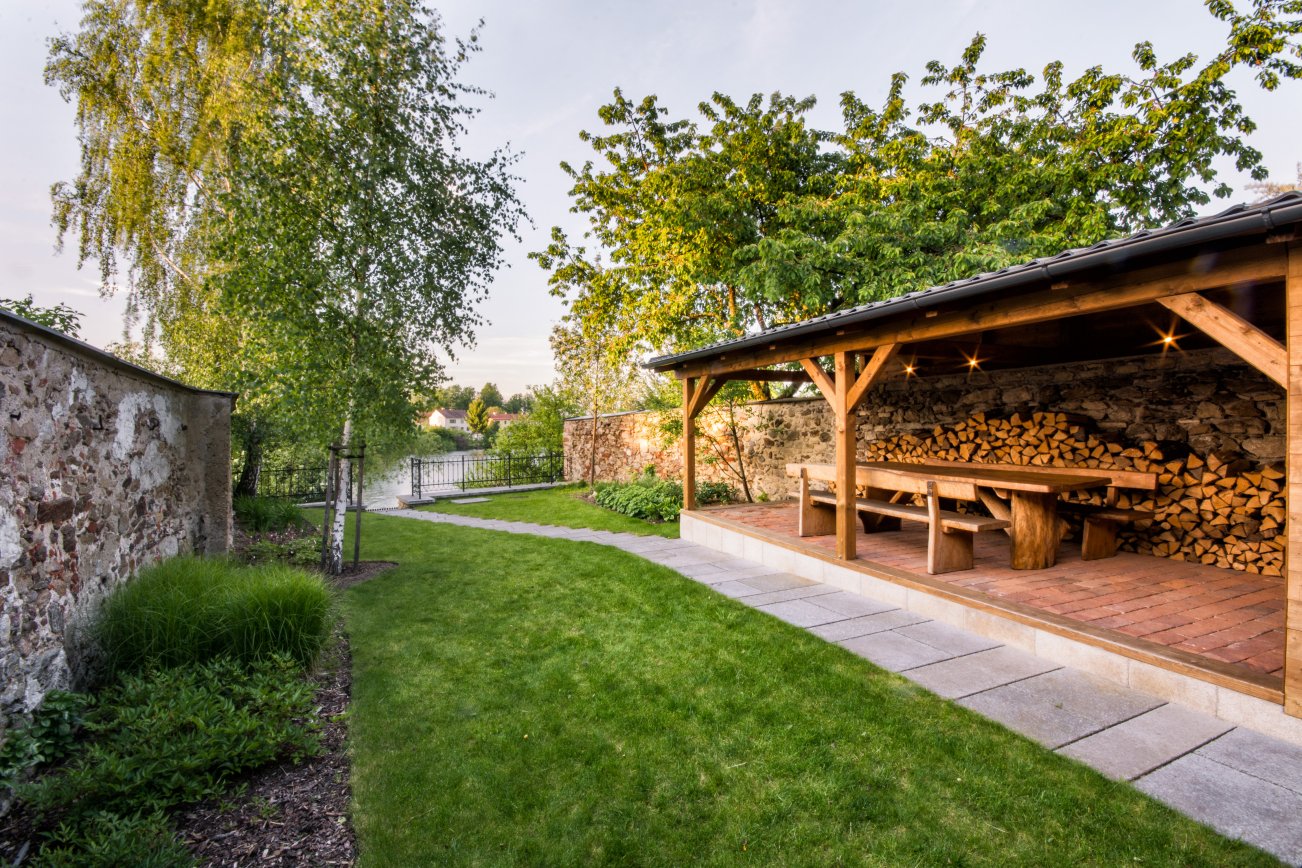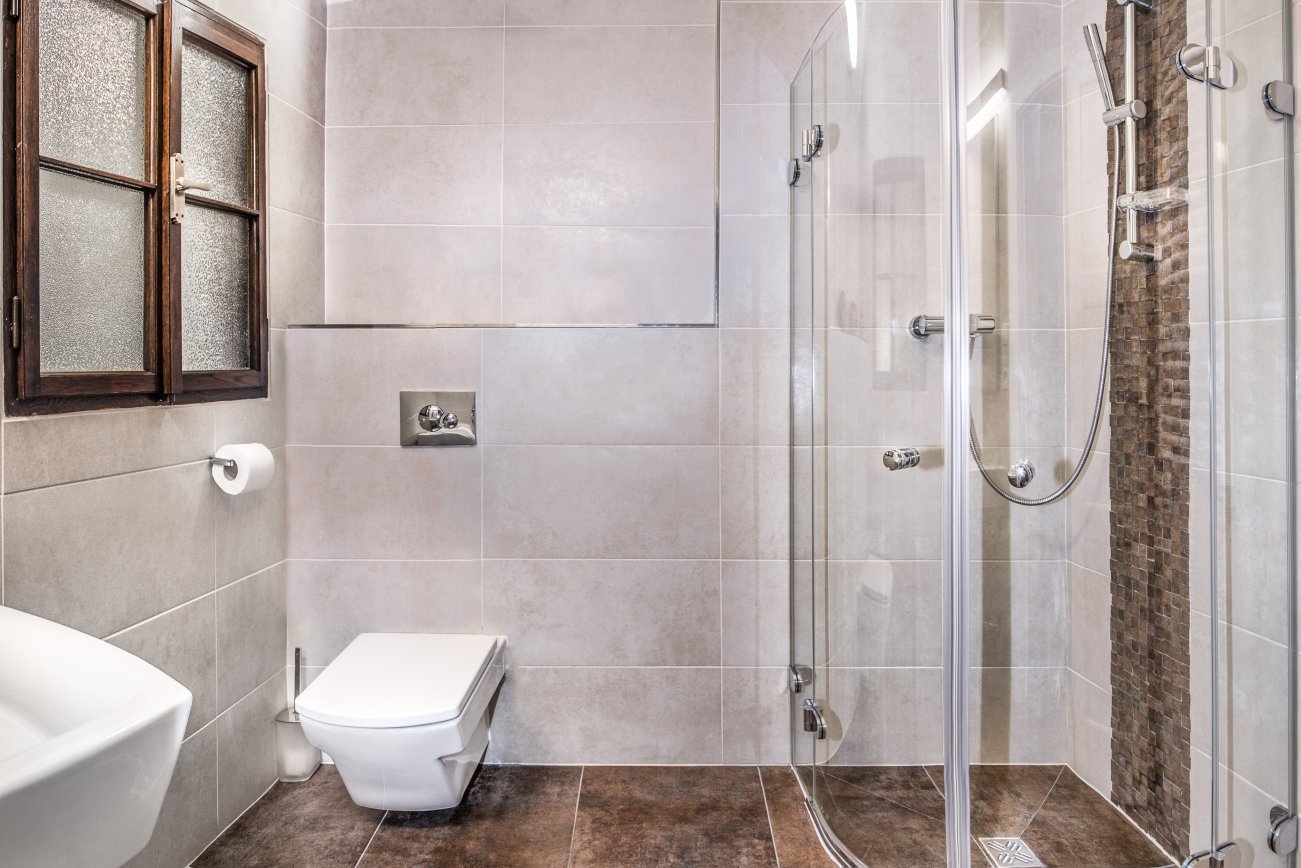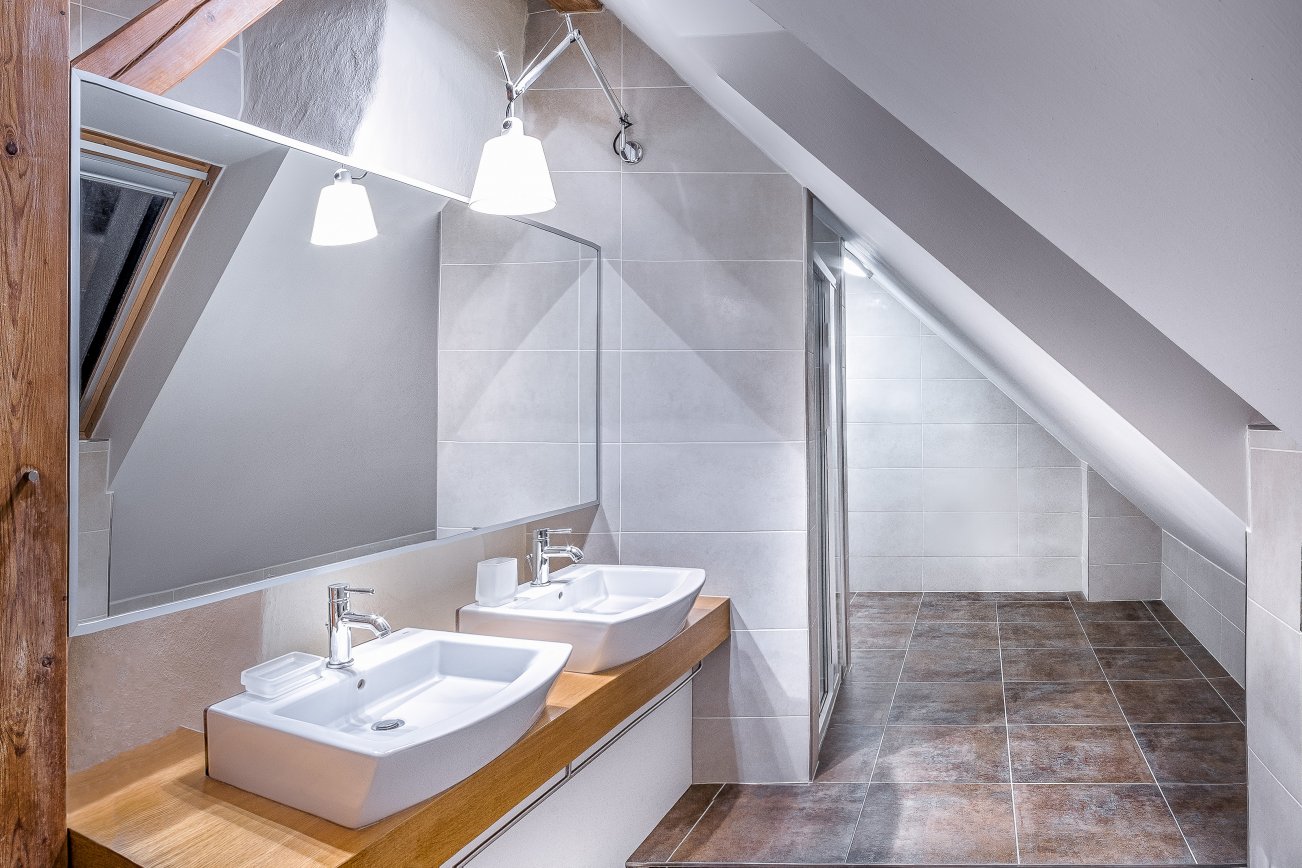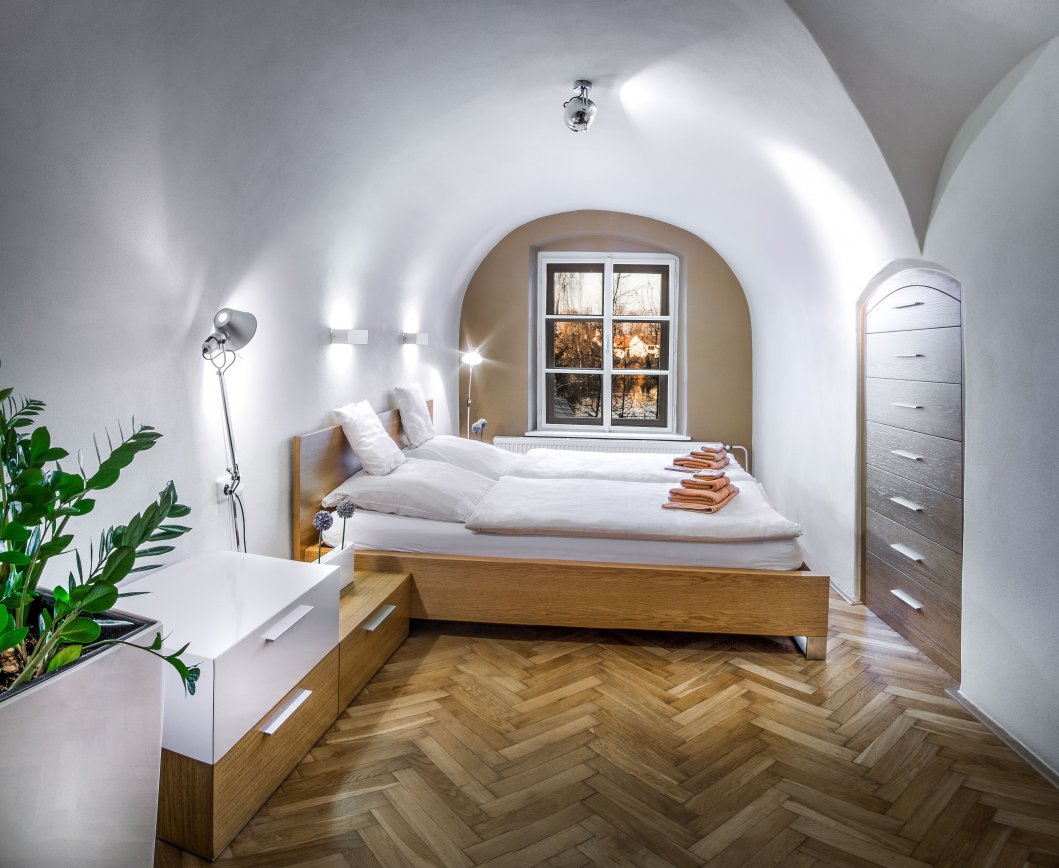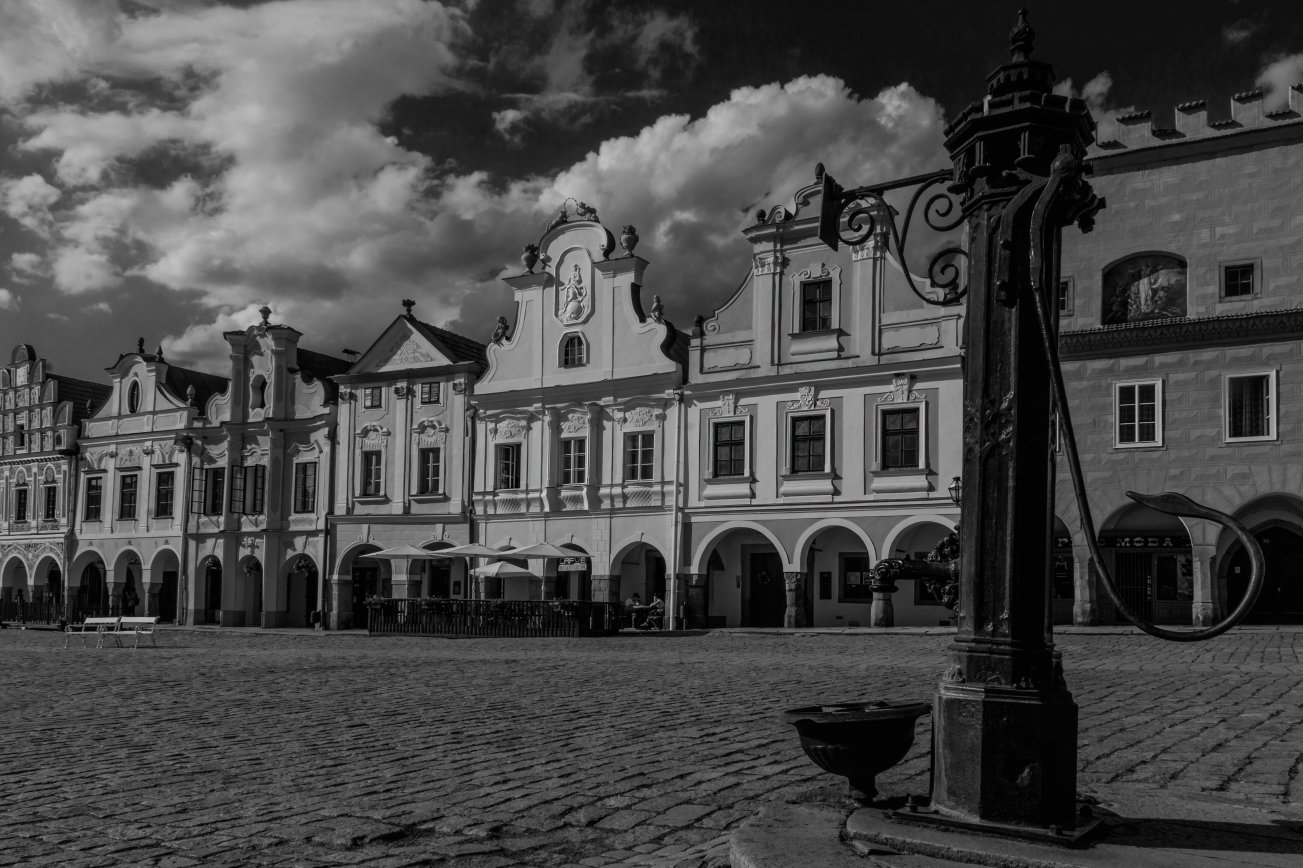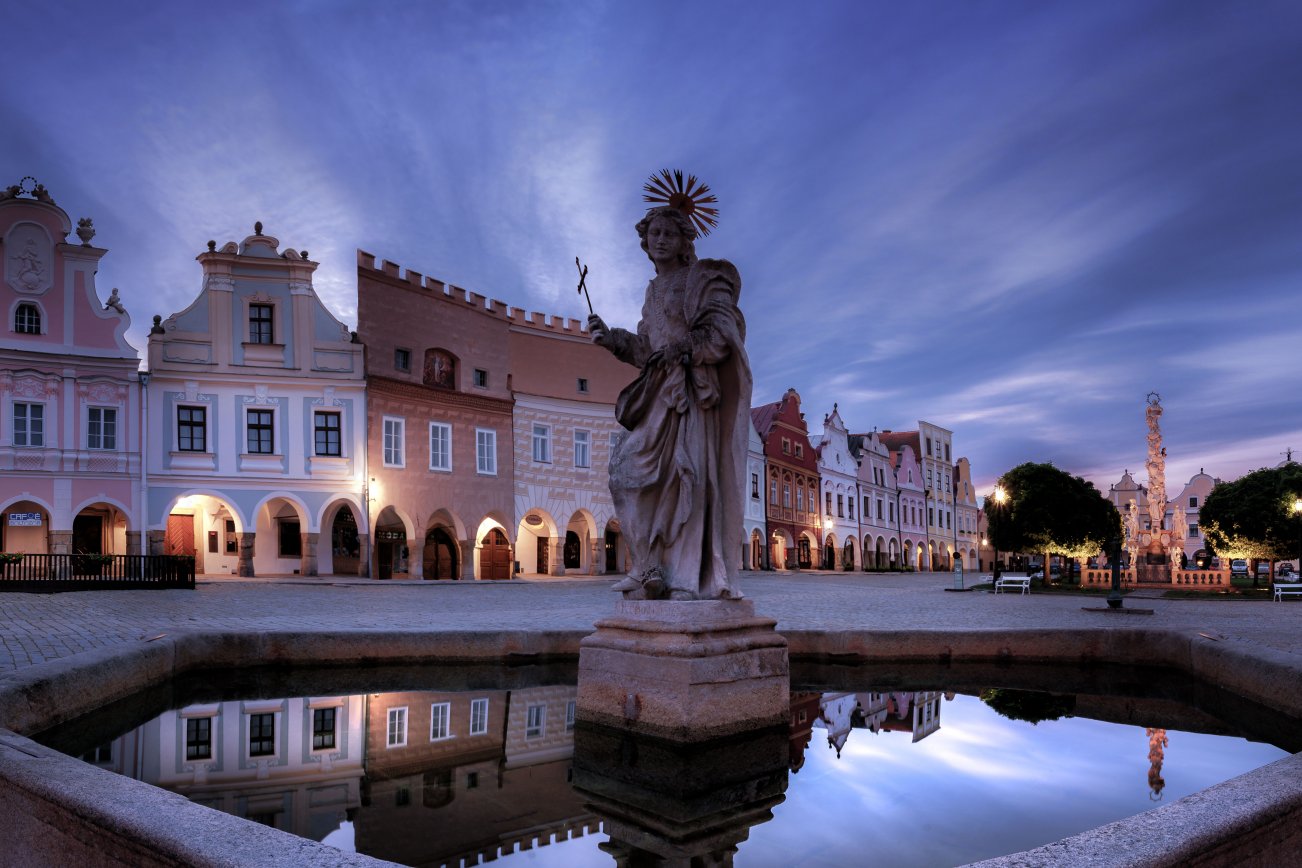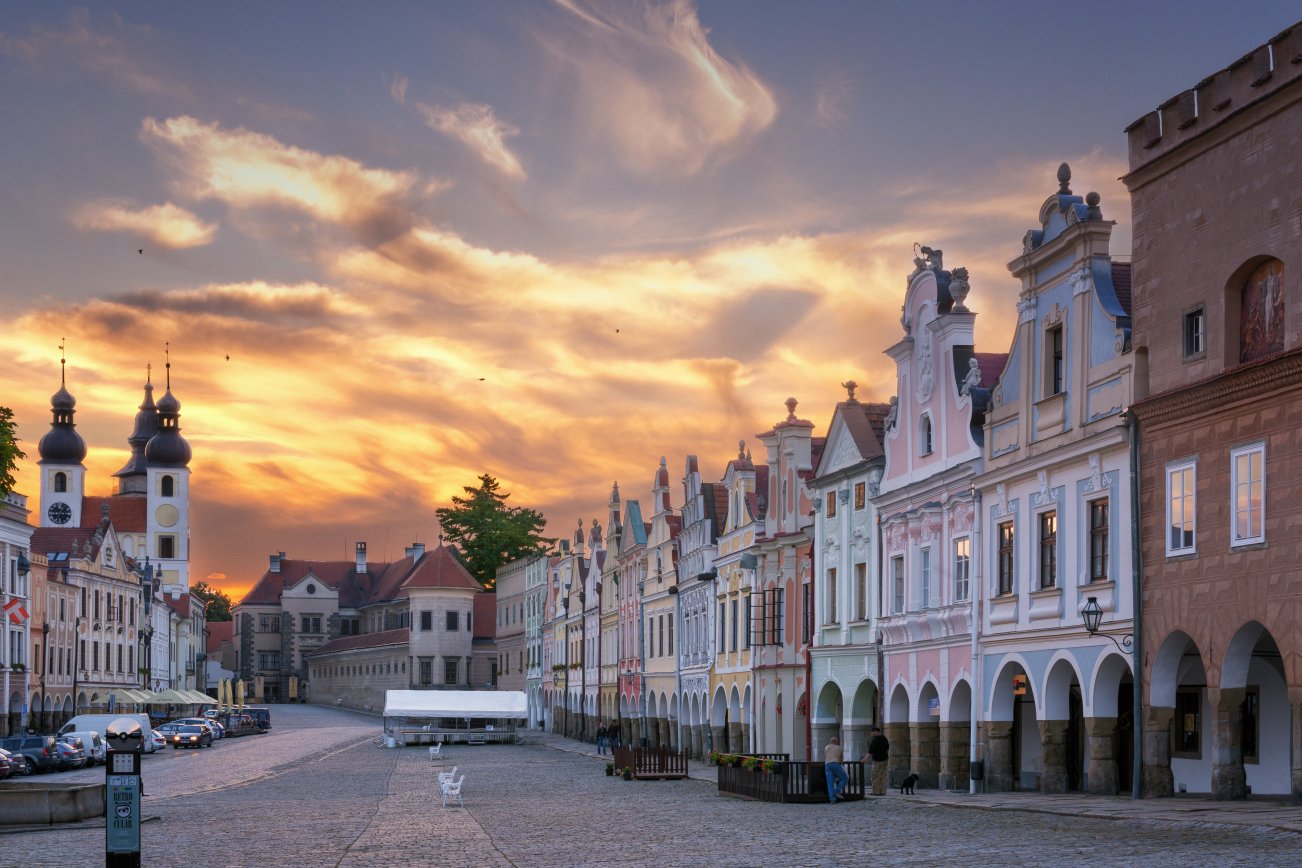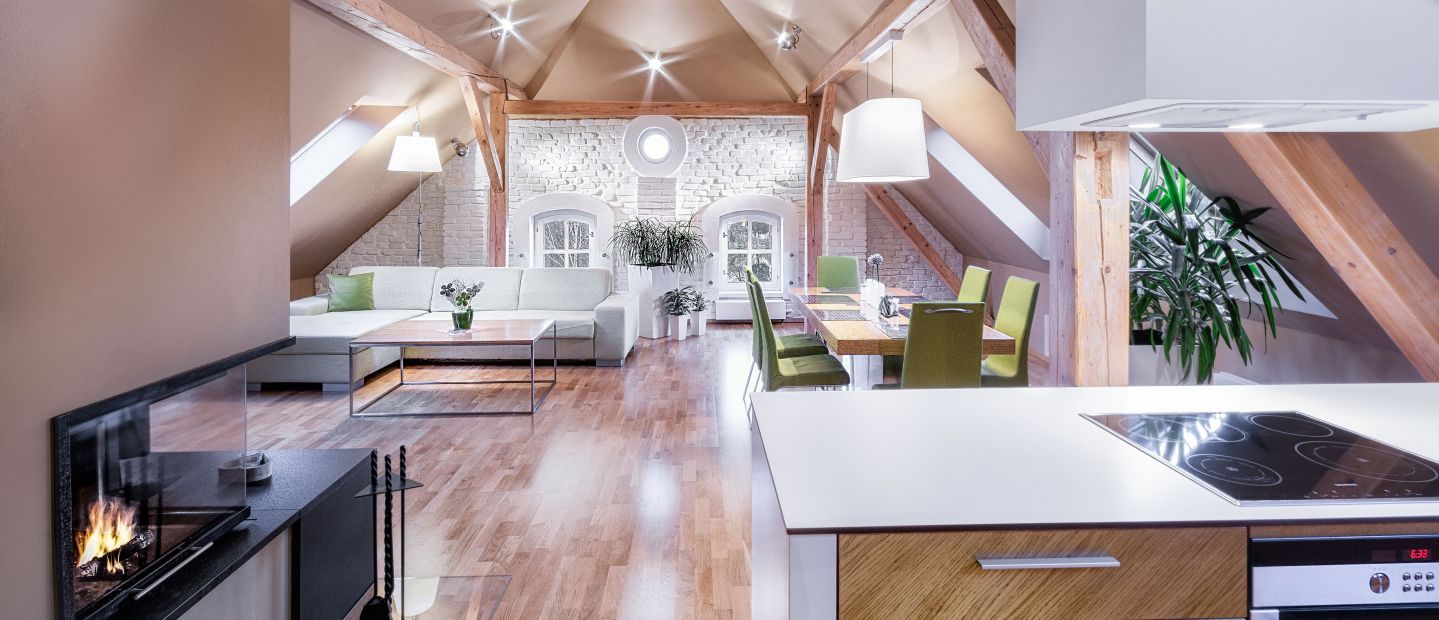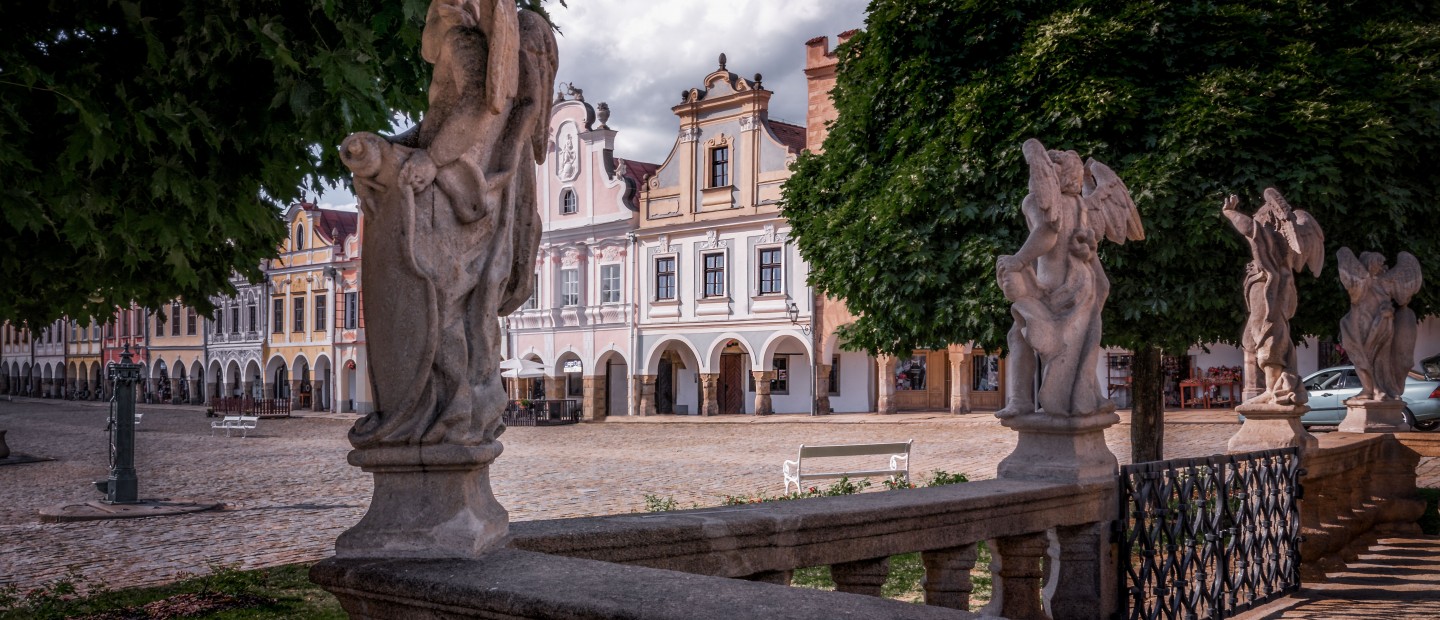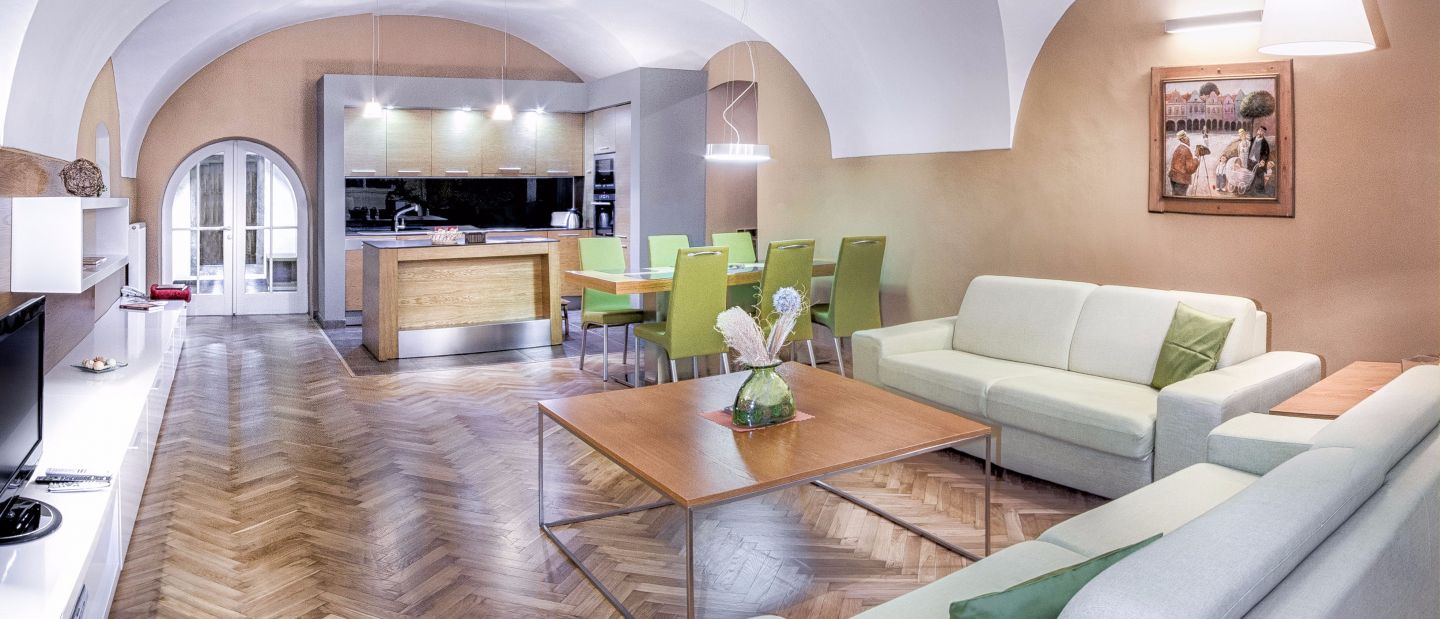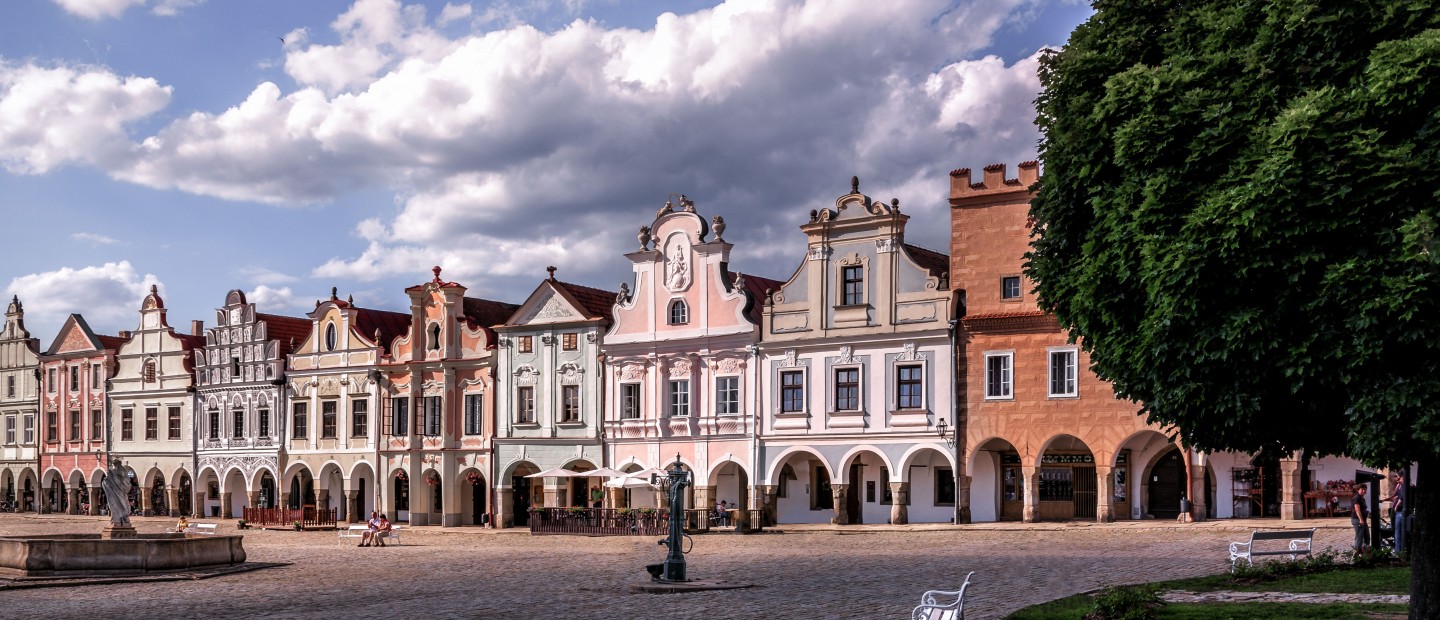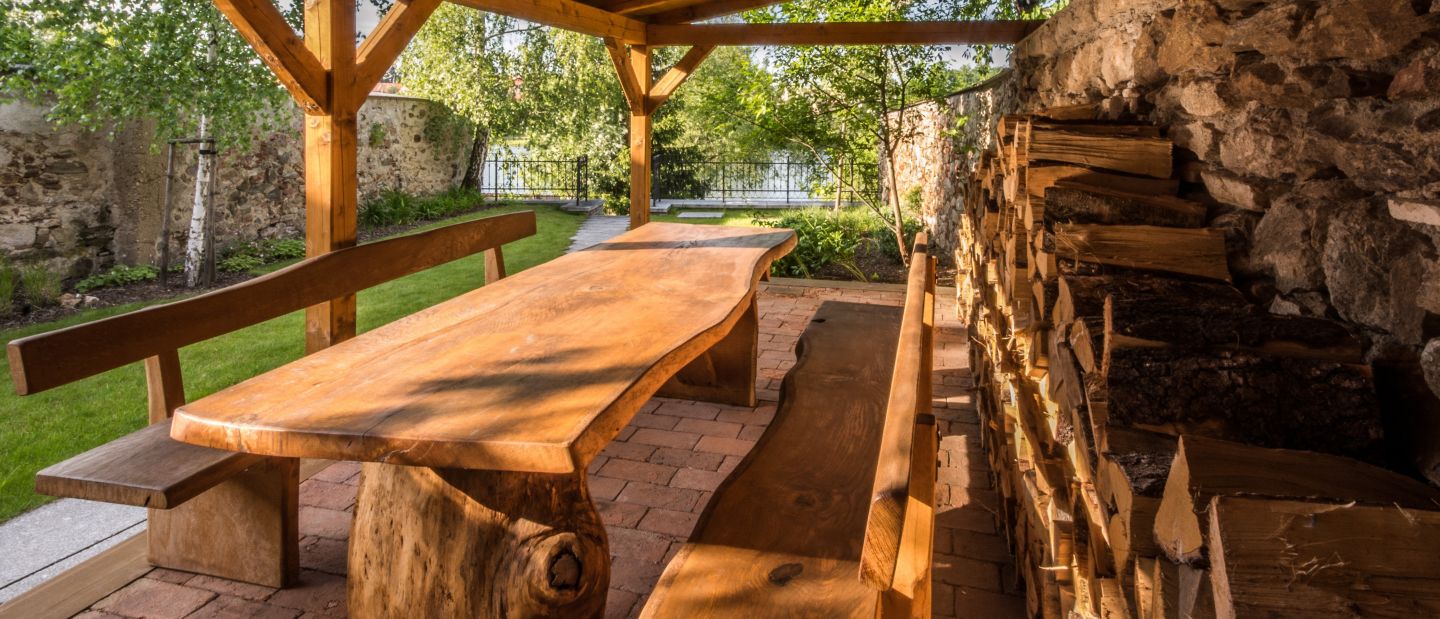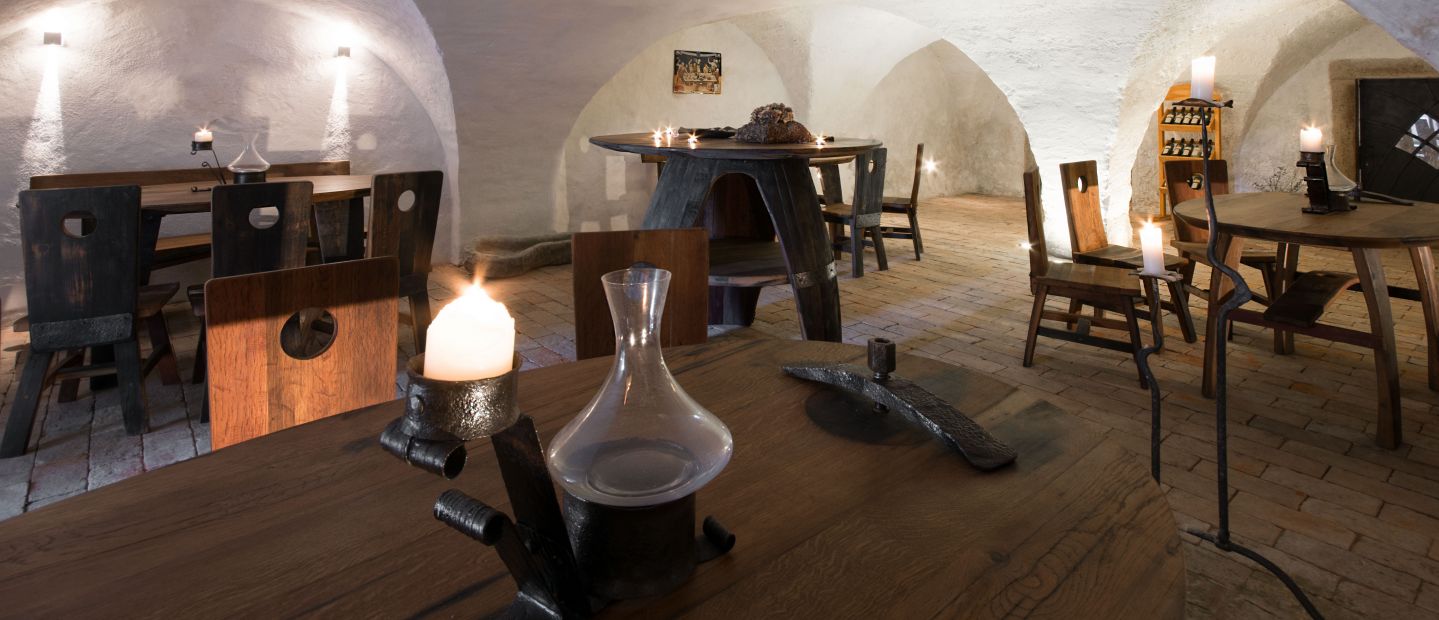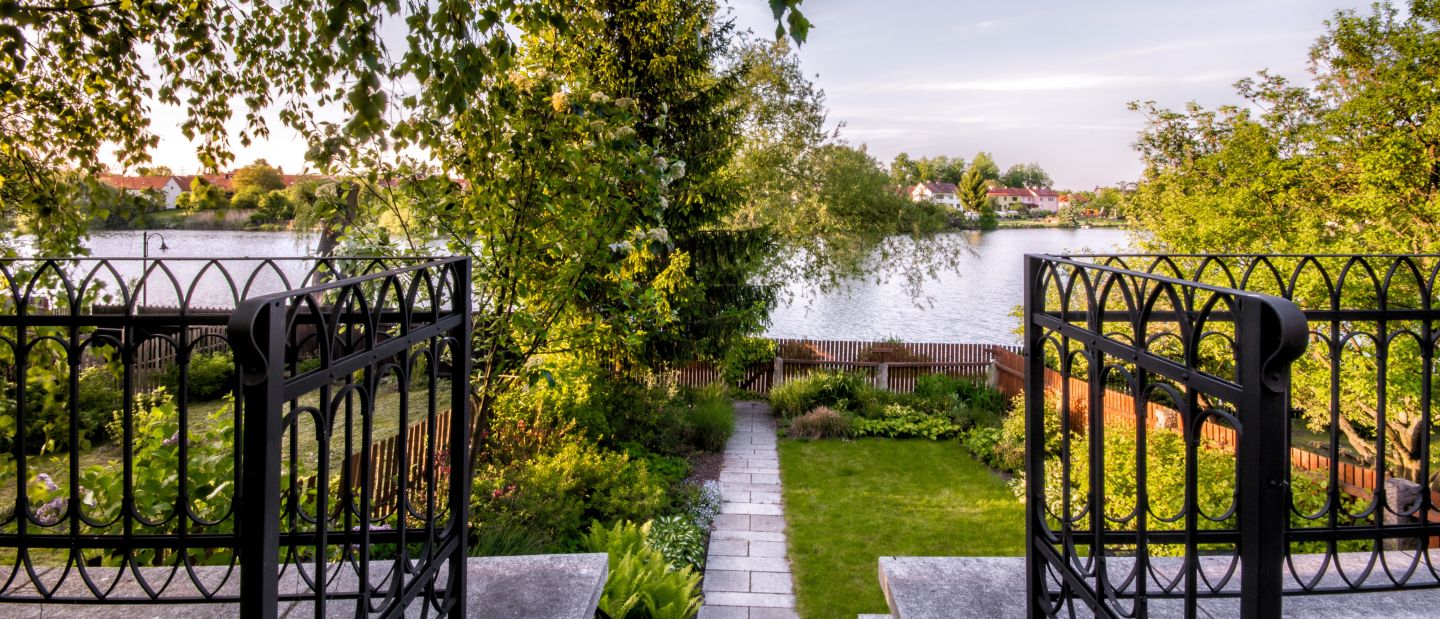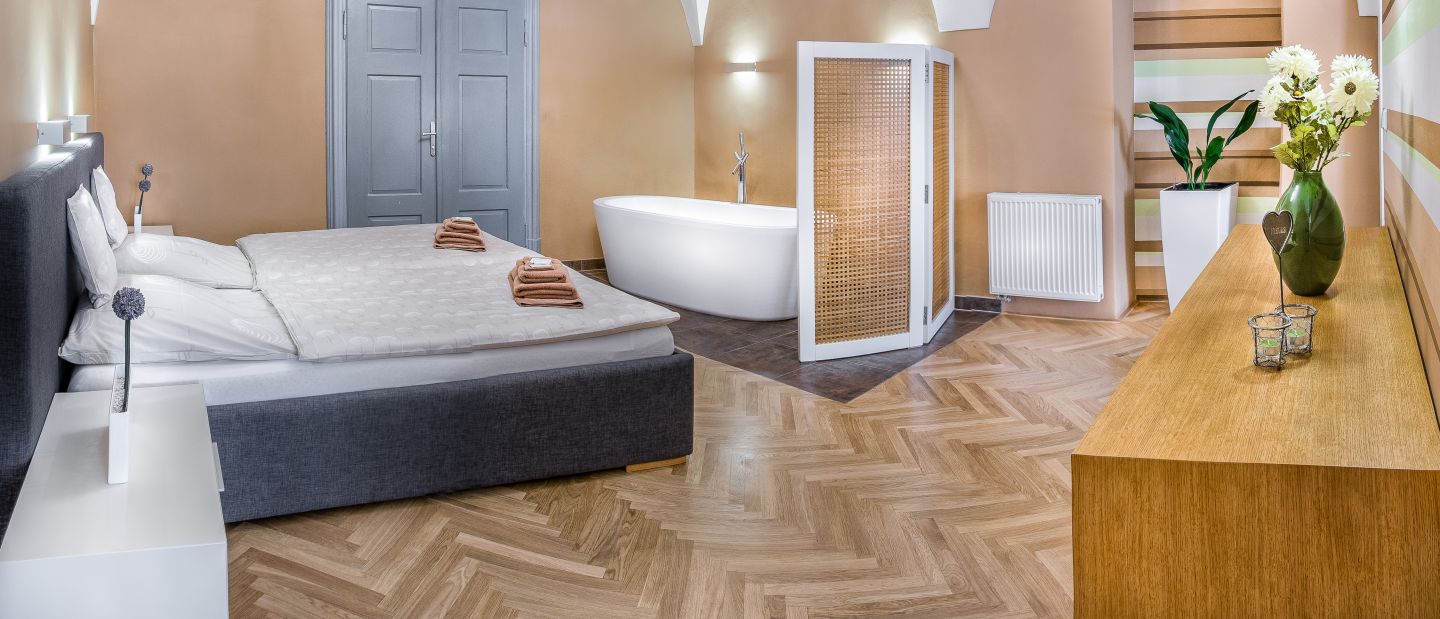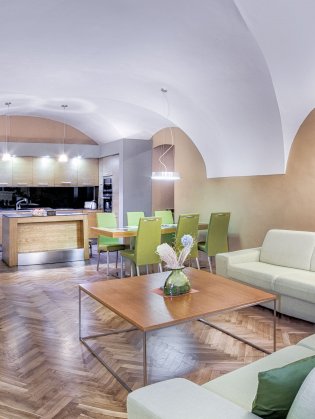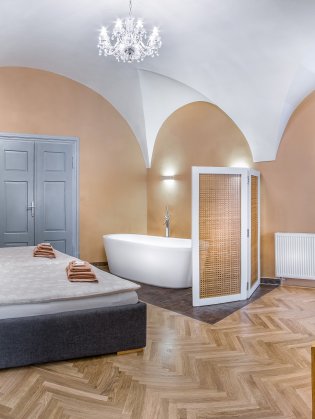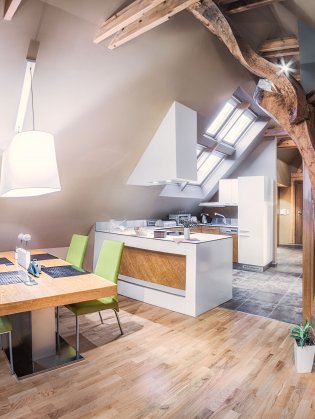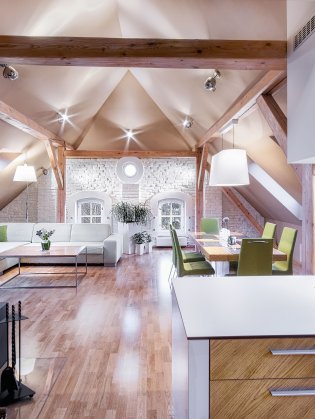Location
Chornitzerův dům is located on the most beautiful square in our country, called náměstí Zachariáše z Hradce, in Telč. The contemporary beauty of the town stems from the mid-16th century, when Zachariáš of Hradec took over the Telč estate. This was the heyday of the town and the chateau. The enlightened and rich magnate generously rebuilt his Gothic castle designed by the architect B. Maggi of Arogno and constructed an adjoining Renaissance chateau. Italian workmen were invited to the castle help the burghers to reconstruct the Gothic dwellings into neat houses with gables and arcades.
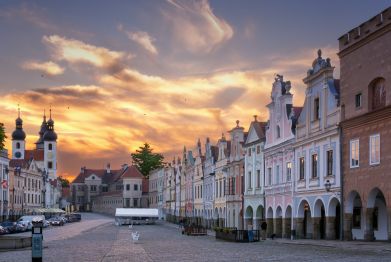
The historic town center, consisting of a large Renaissance chateau complex and the square with a unique undisturbed complex of historical houses in Renaissance and Baroque styles, has managed to retain its distinctive appearance over the centuries from the days of Zacharias of Hradec. An appearance, which gained an Italian touch thanks to the influence of Italian architects and craftsmen. Little wonder then that Telč is called the Venice of Moravia. The town was registered in 1992 as a UNESCO World Cultural and Natural Heritage site.
History
The history of the building dates back to the year 1530, when a large fire swept through the town of Telč. The first identified owner of the house was Mertl or Martin Kosař. Mertl Kosař, as his name clearly suggests, was a scythe or sickle maker. Mertl Kosař died in 1567 and in his inheritance he bequeathed the house to his son Linhart the tailor. Linhart Mertl participated in the active administration of the town, he was an alderman from 1960 and between 1580 and 1582 he was the municipal magistrate.
The next owner Jan Liškář was also part of the town council. We can read the name of John Liškař among the aldermen inscribed on the bell of St. James, which was cast in 1603. In 1609 the house was sold to Vlach Petr Alberto for 430 kops. Petr Alberto was apparently a descendant of the Vlachs, who came to Telč in the mid-16th century to build the chateau. From 1619, Petr Alberto was a councilor or reeve at the town hall. He died in 1640, and his widow Marie Magdalena Albertová inherited the town house.
Ondřej Hanusík, a mercer, became an important owner of the house in 1734. This very wealthy man built the chapel of the Virgin Mary in the orchard at his own expense and in 1727 he built a sculpture of St. Rodina under the Great Gate. In 1747 the house was acquired by Martin Ignatius Chornitzer. In the years 1751-1760 he was the town syndic and then he was for many years the chief director of the manor. The family and descendants of Mr. Chornitzer lived here until 1897, i.e. 150 years. We can say that this family contributed most significantly to its current splendor.
Architecture
The house stands on a relatively wide and long Gothic land plot and existed before 1530. The Gothic building remained after the reconstruction the two neighboring walls and the deep central wall during the Renaissance. An arbor probably stood in the 16th century. Then the passage was apparently extended, the cellar was vaulted to the central pillar. It is not clear when the floor was arched.
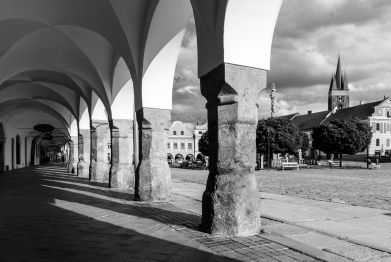
There are no records of the Baroque reconstruction. During the reconstruction of the facade around 1740, the stairway was renovated and holes in the front wall were redesigned. The roof trusses and windows were replaced in 1900. The building is one of the most valuable parts of the historic townhouses in the inner city, not only due to its magnificent Baroque facade but especially due to the preserved historic structure of its lodgings and business premises. The house has a relatively high number of well-preserved valuable architectonic features and elements of historic construction equipment. The significant structural, historical and architectural elements include: Baroque facade, Gothic-Renaissance portal, cellar entrance, Baroque entrance portal, gabled Gothic portal, Baroque frames and doors, sculpted pillars arcade, rear cellar pillar arch, beamed ceiling, lower chamber Baroque vault, water tank from 1680.
